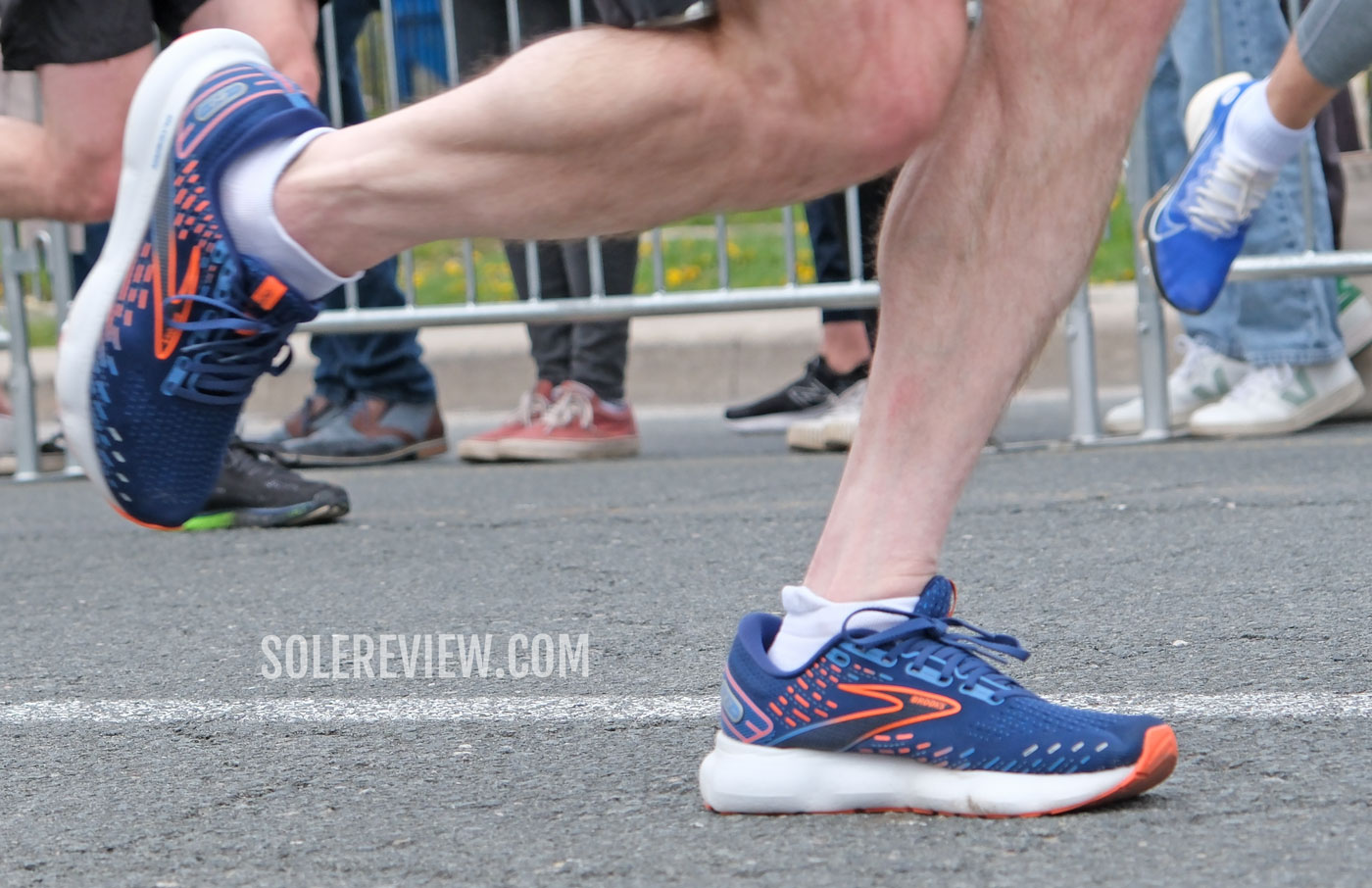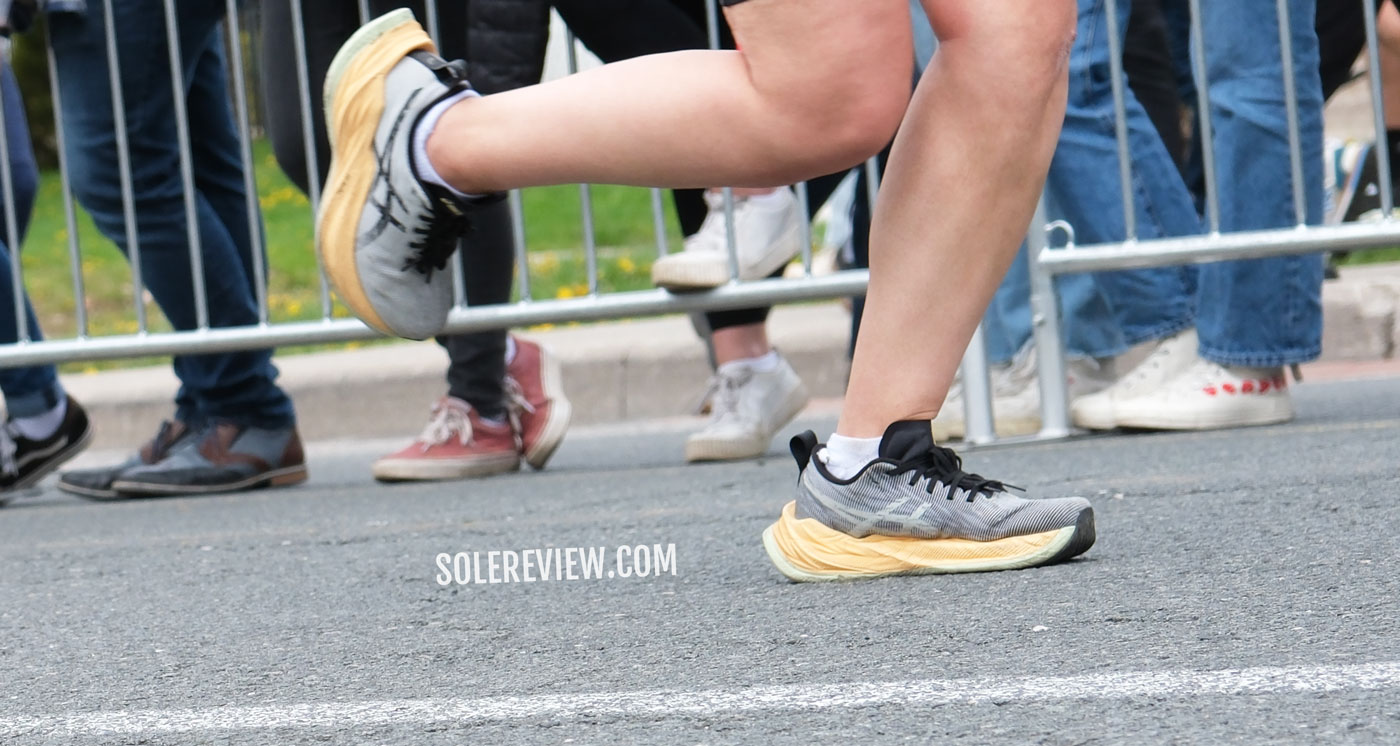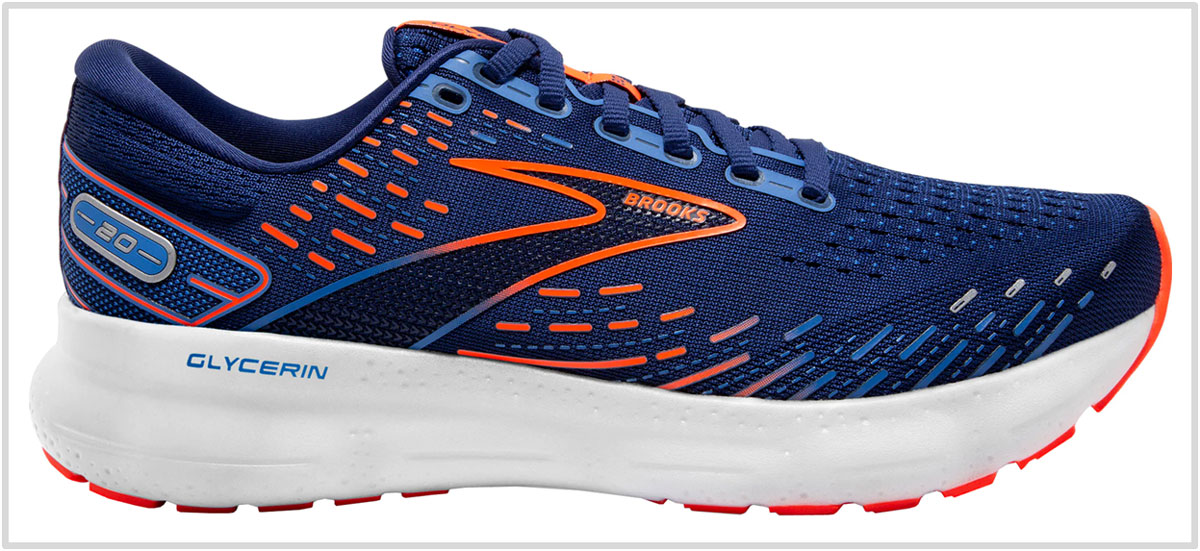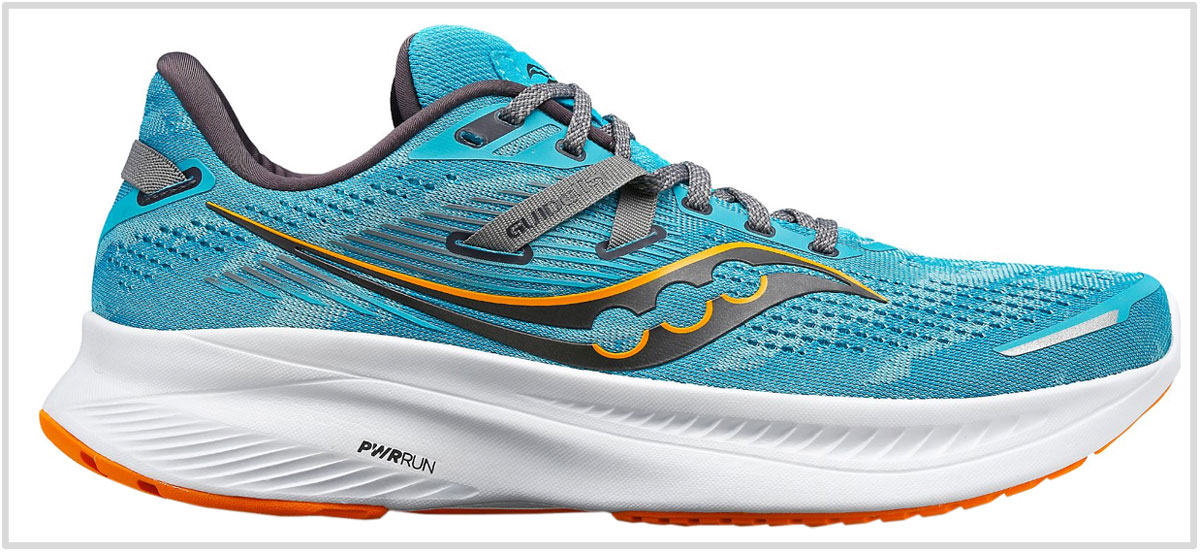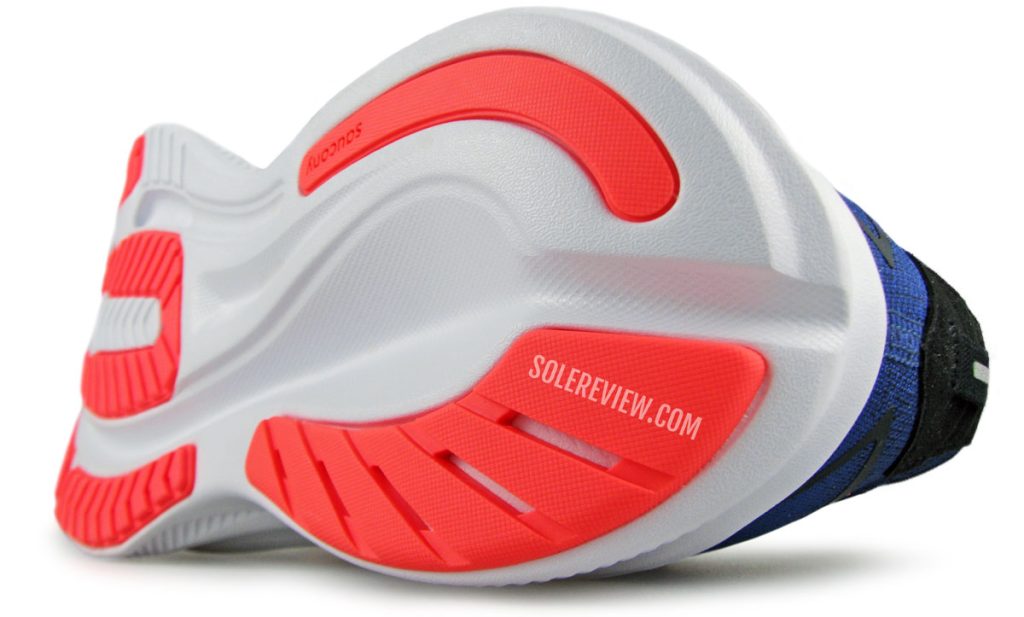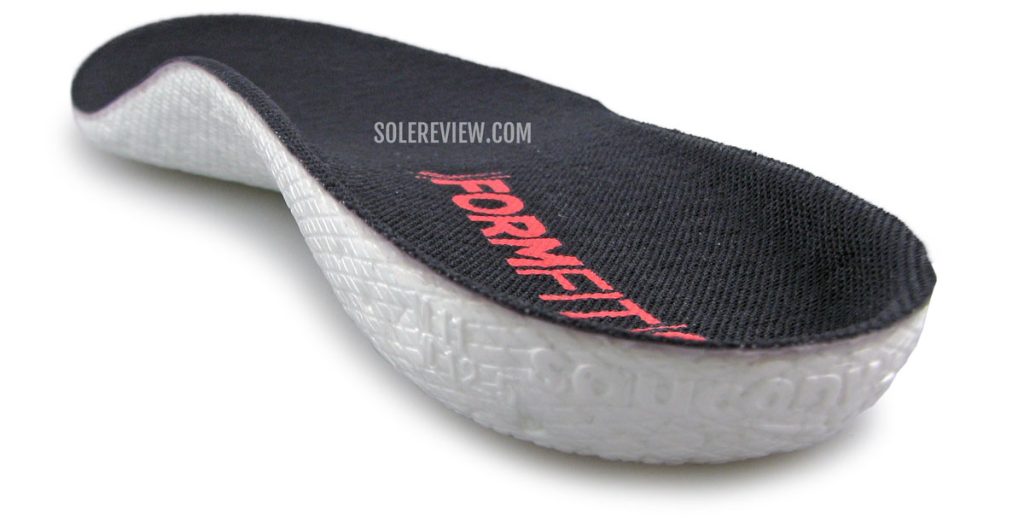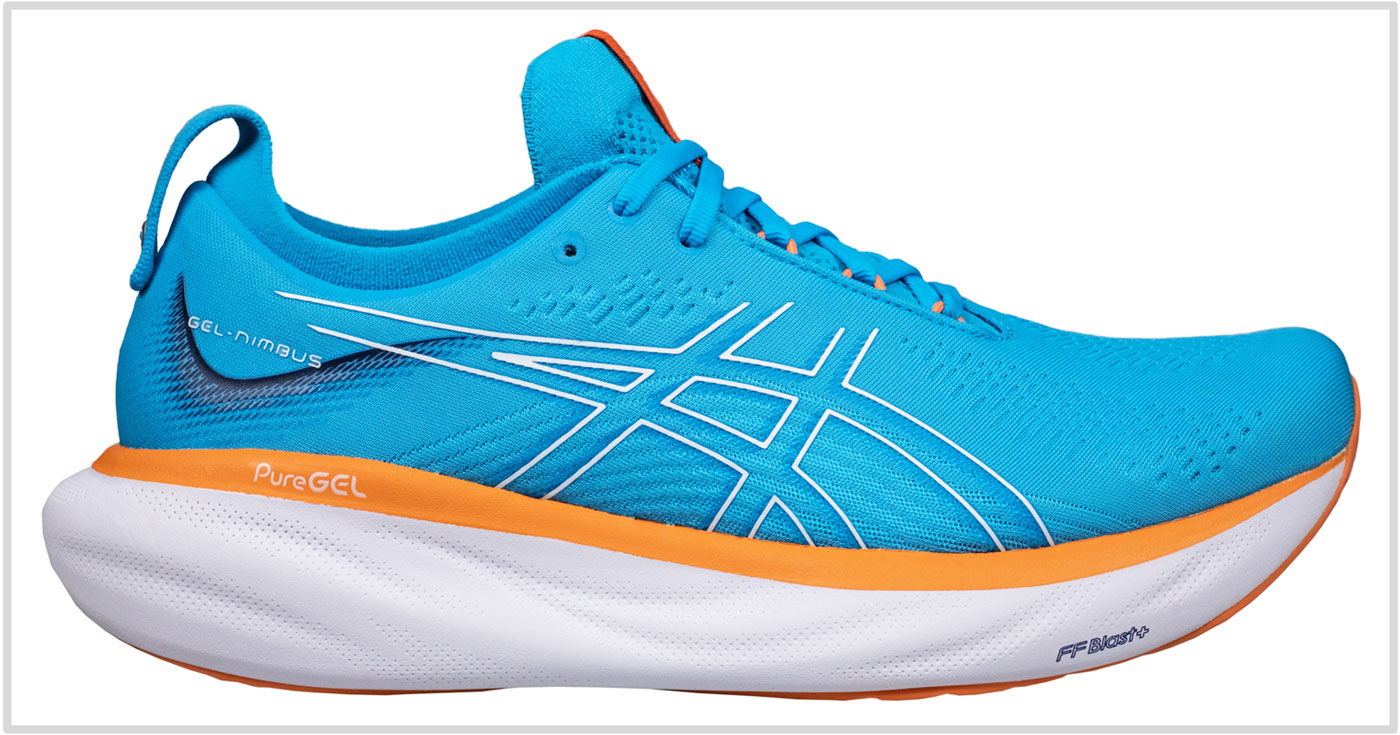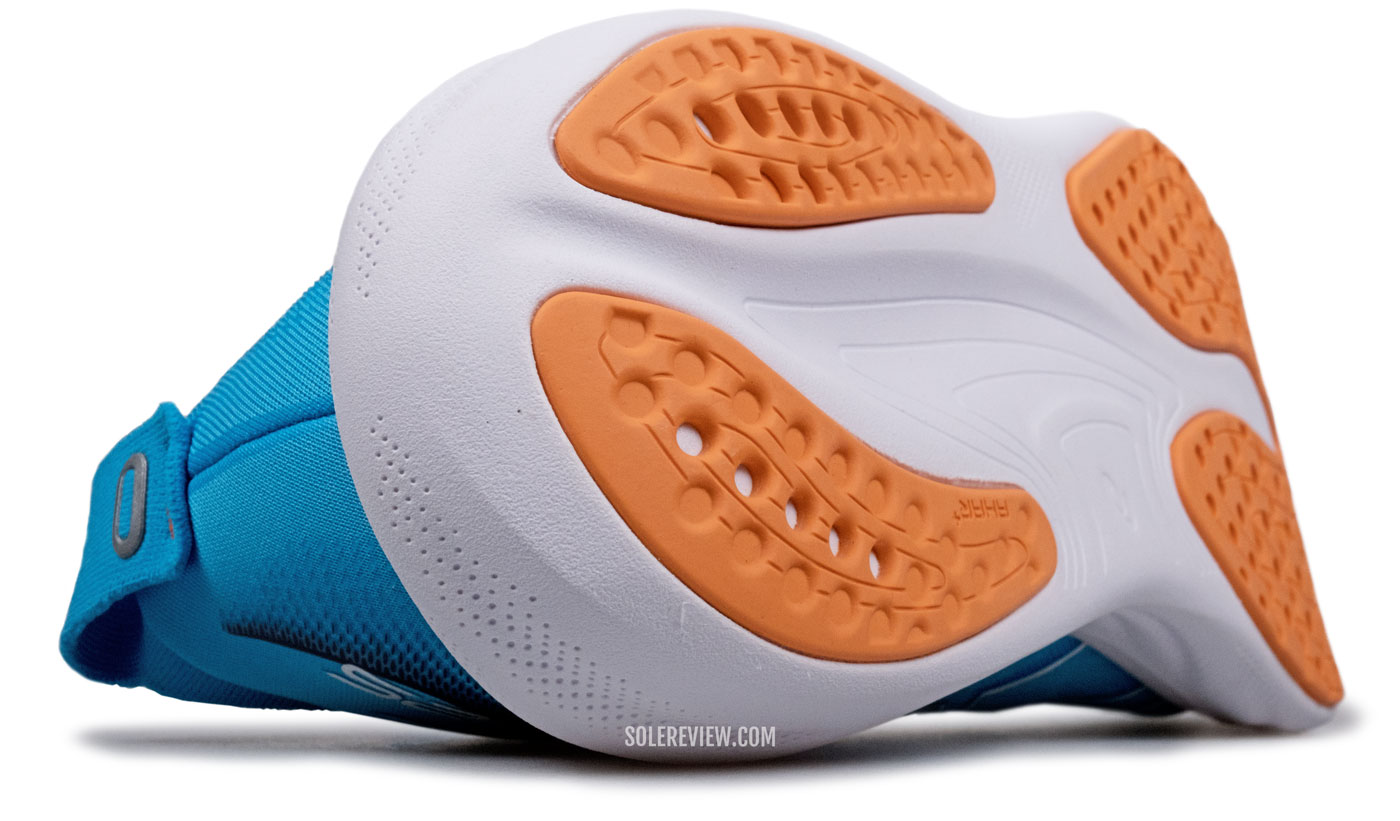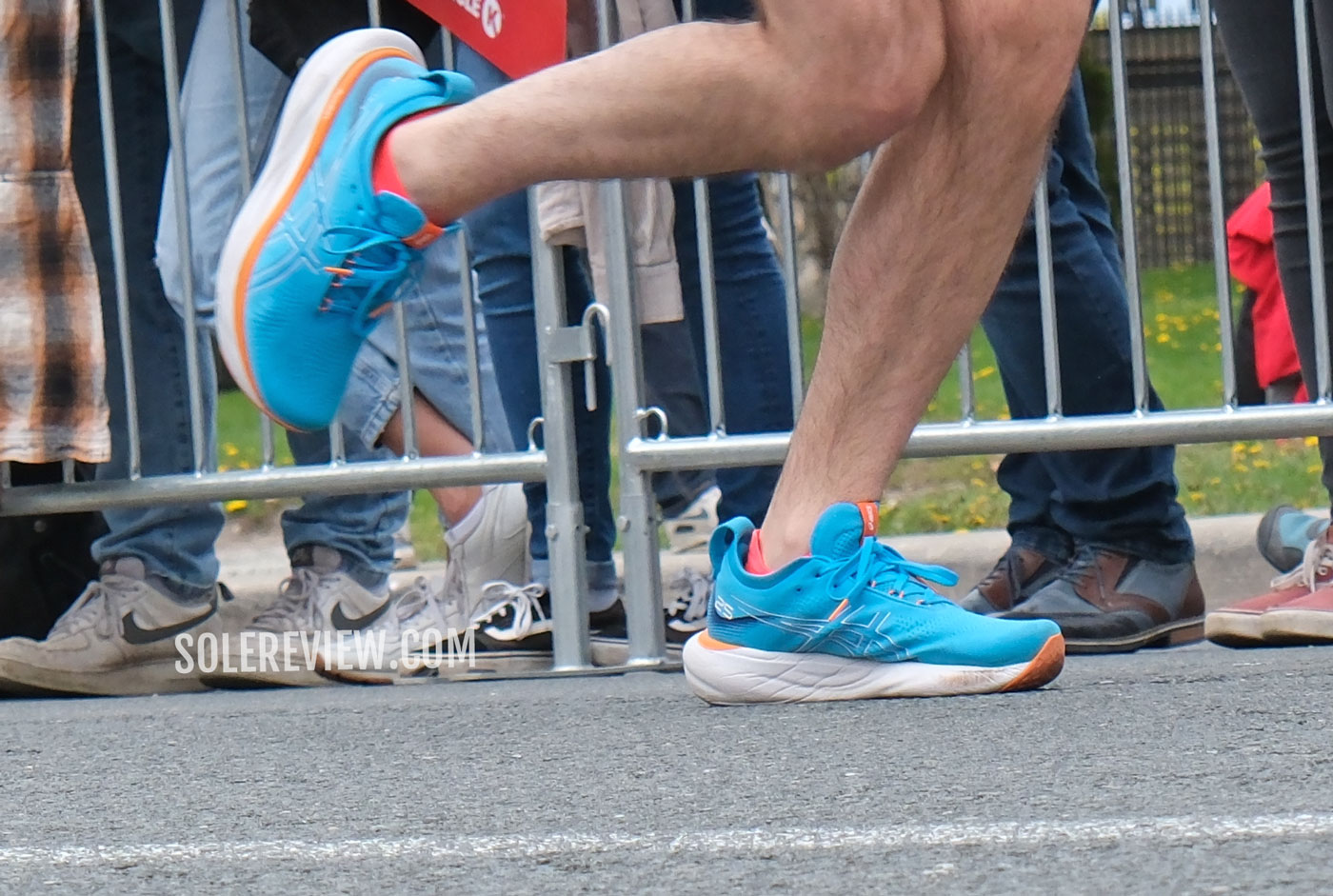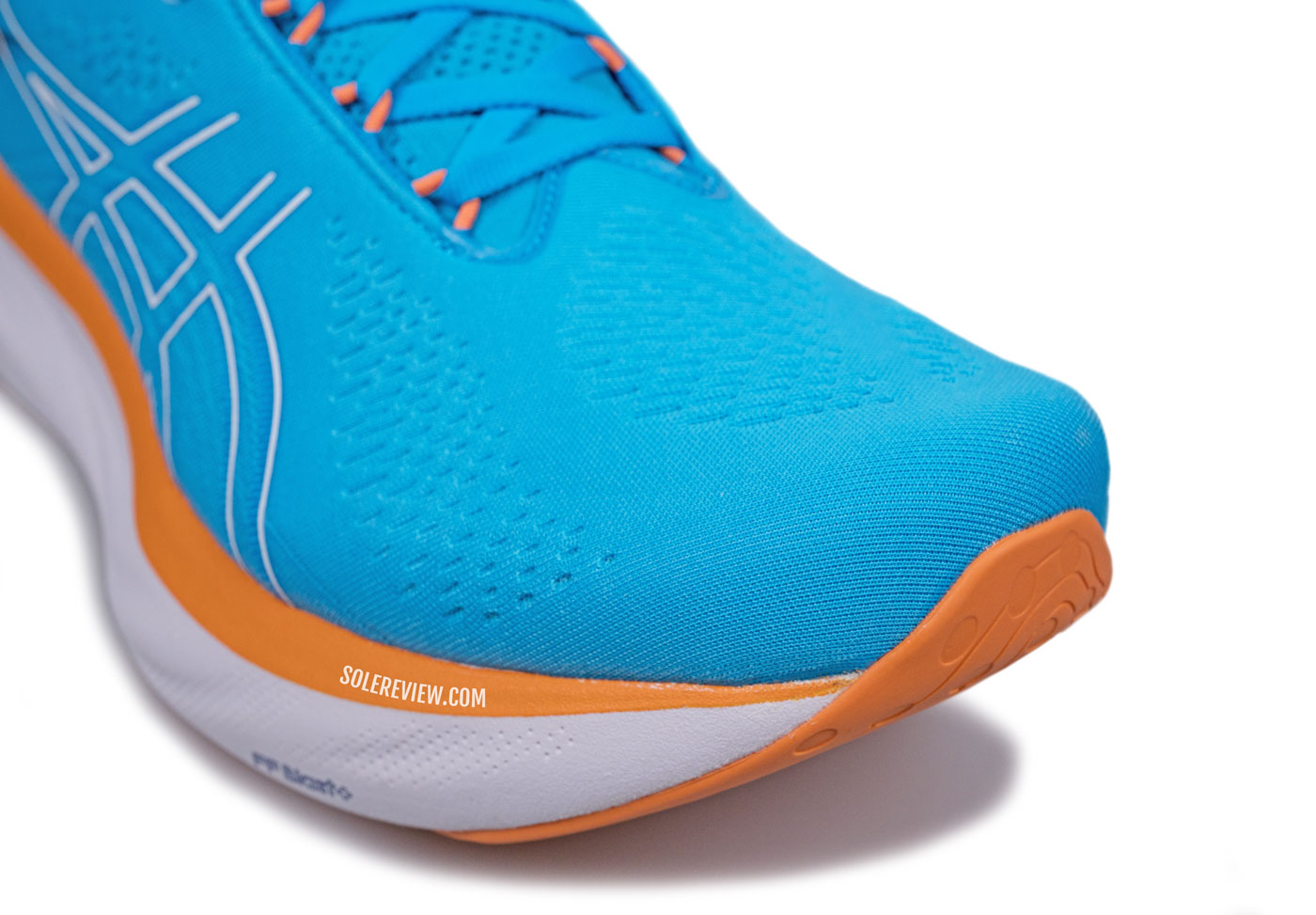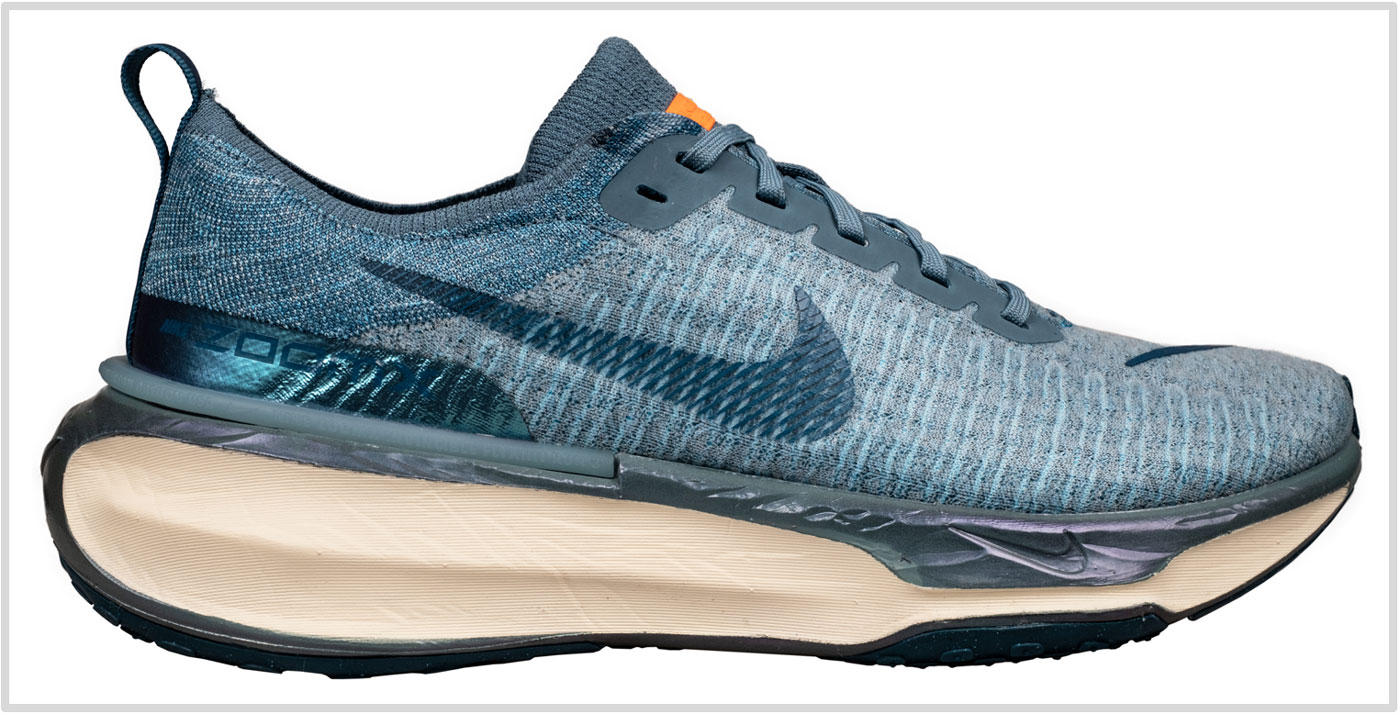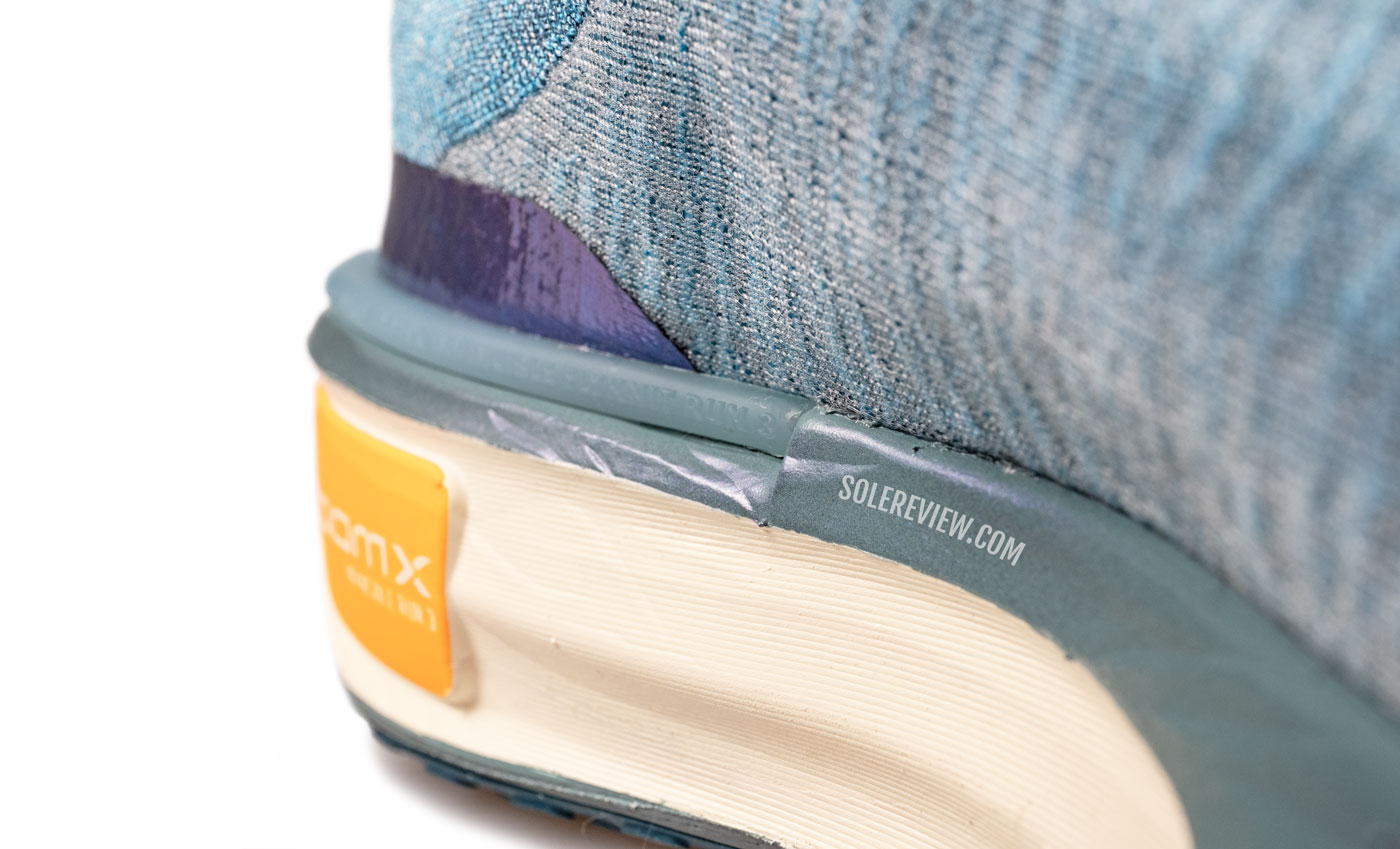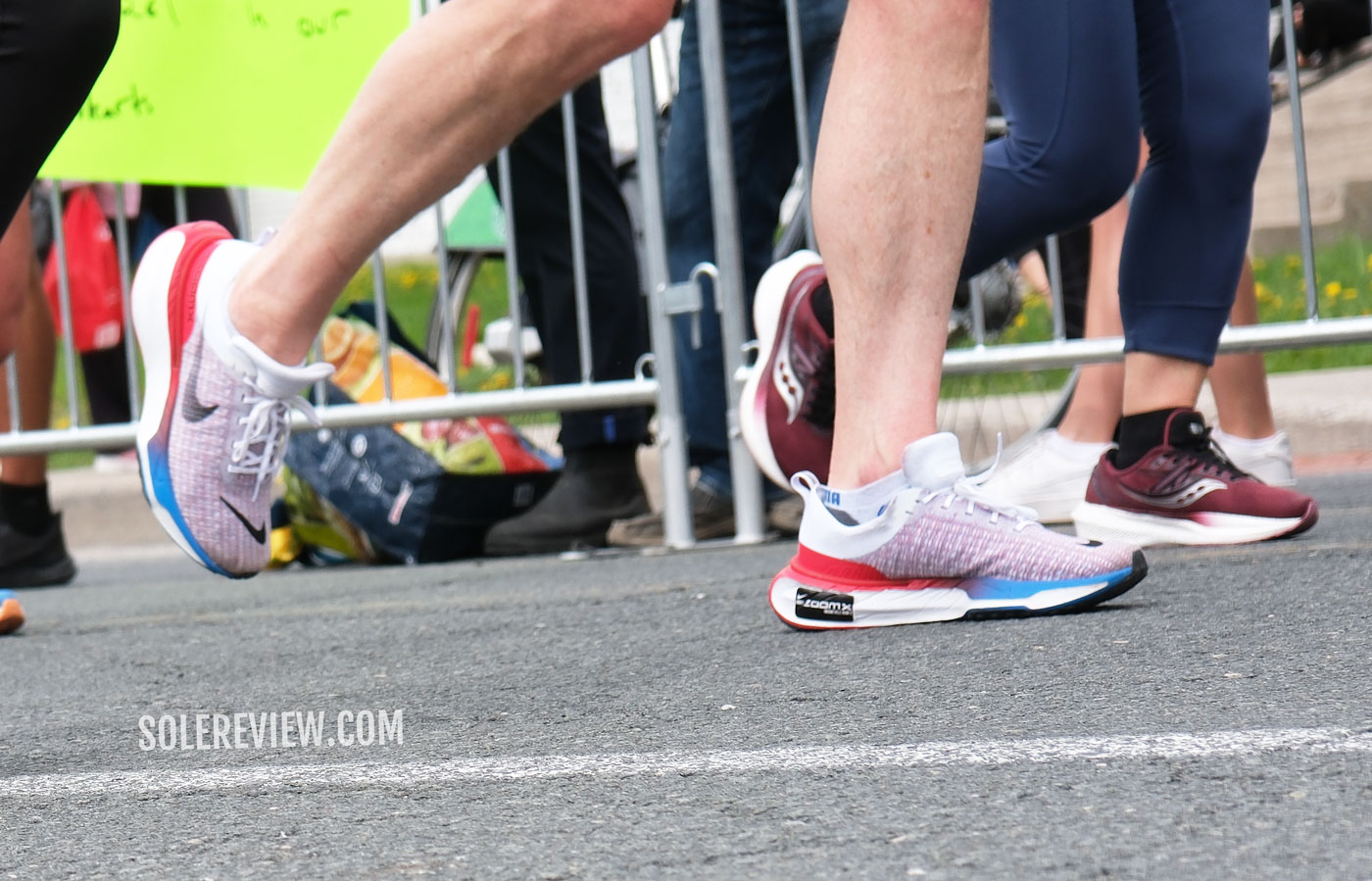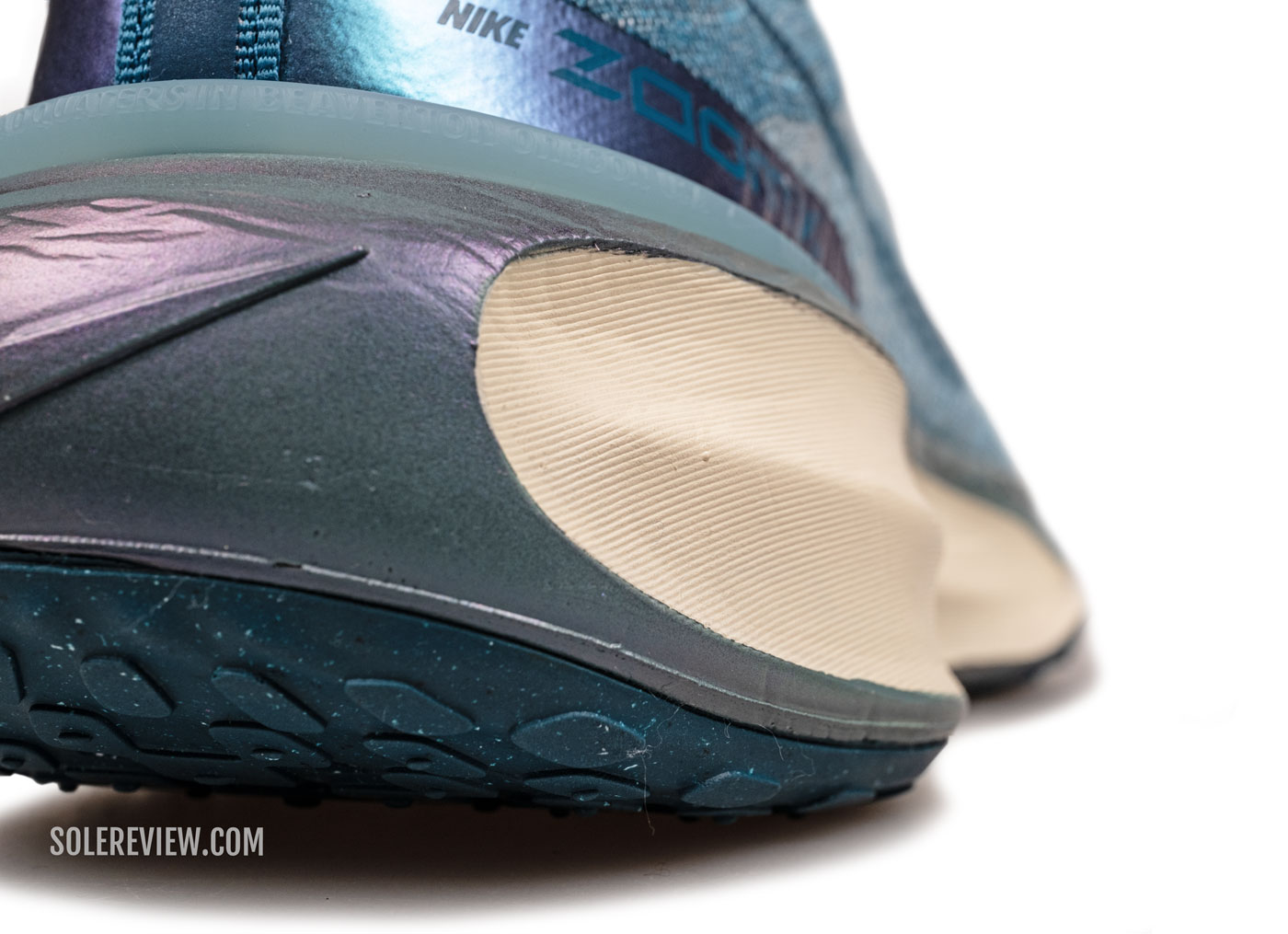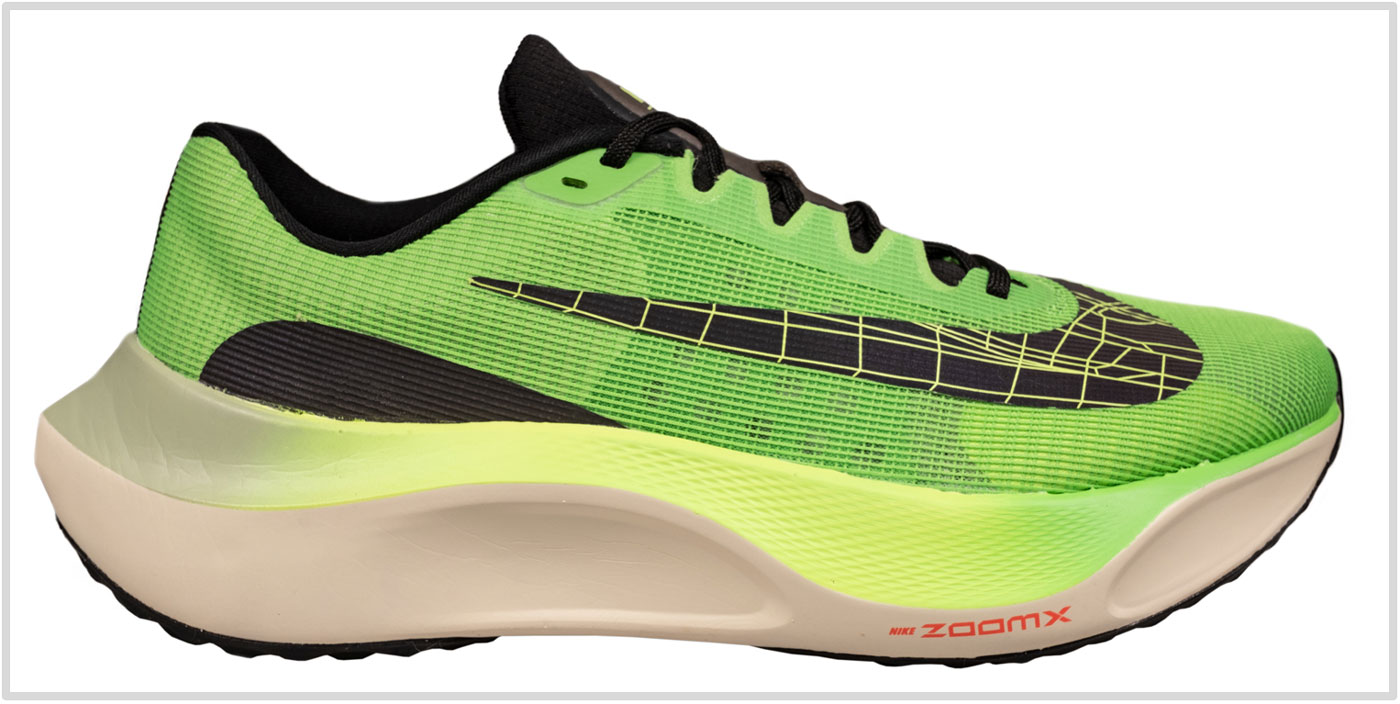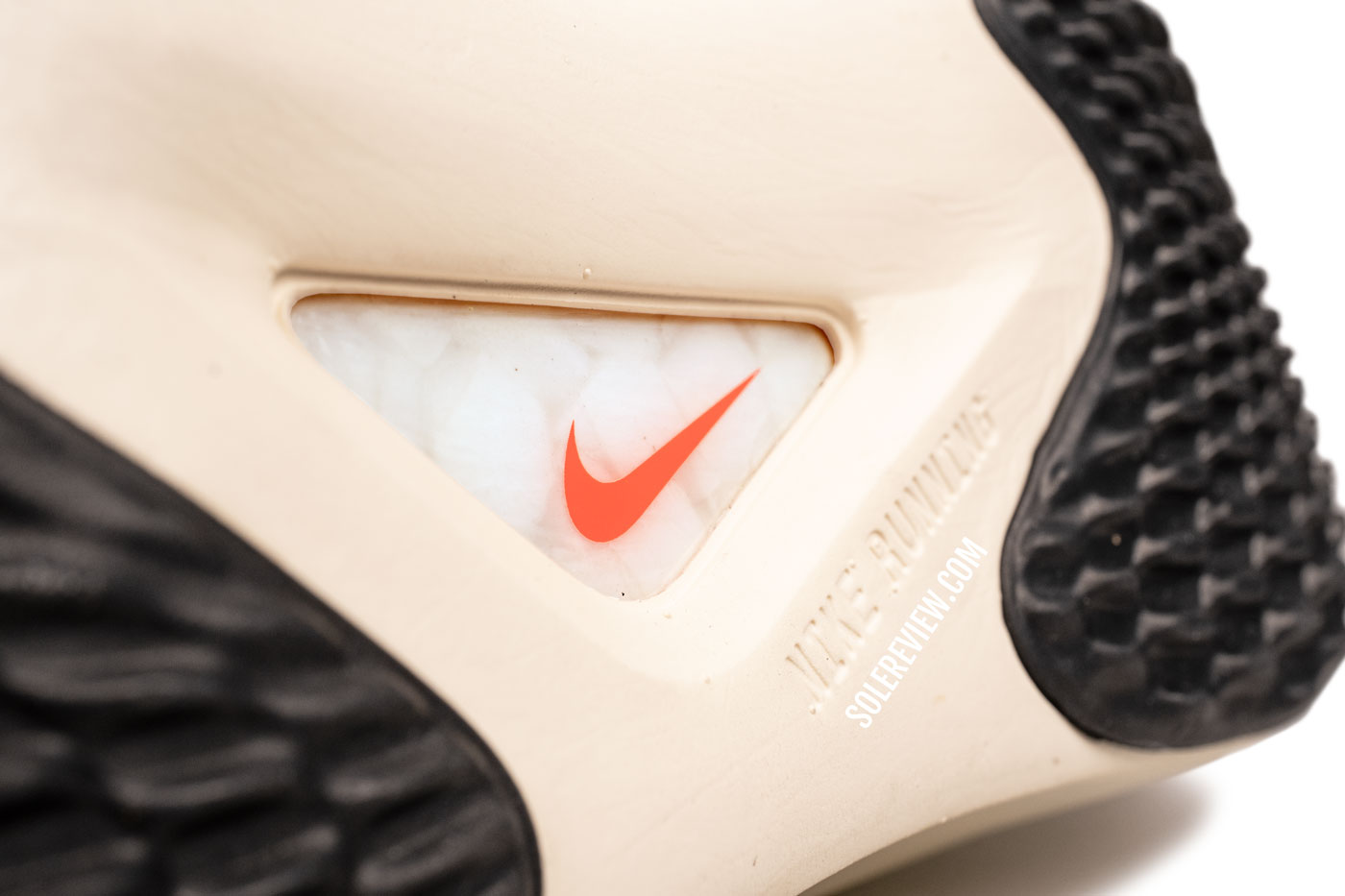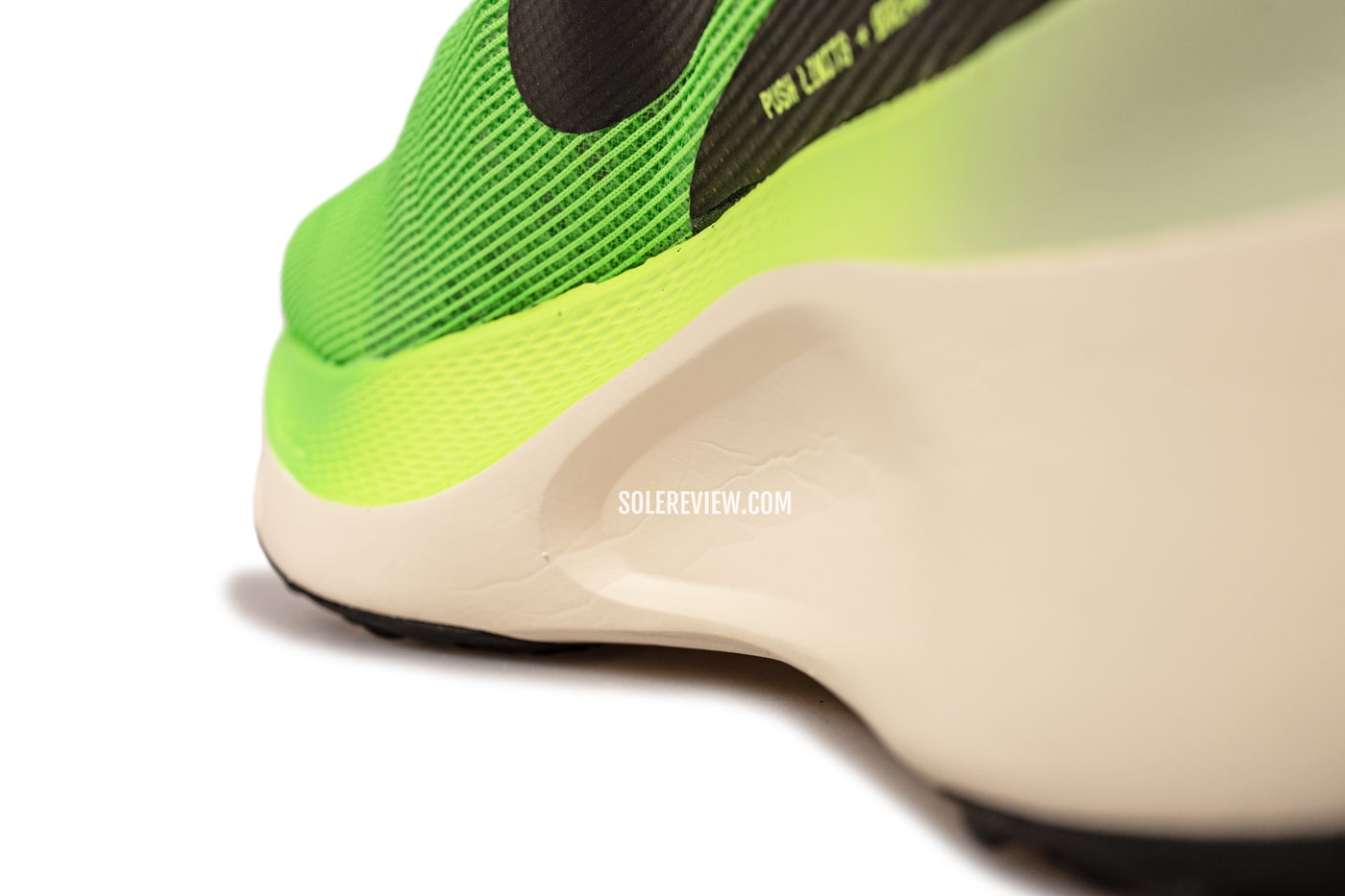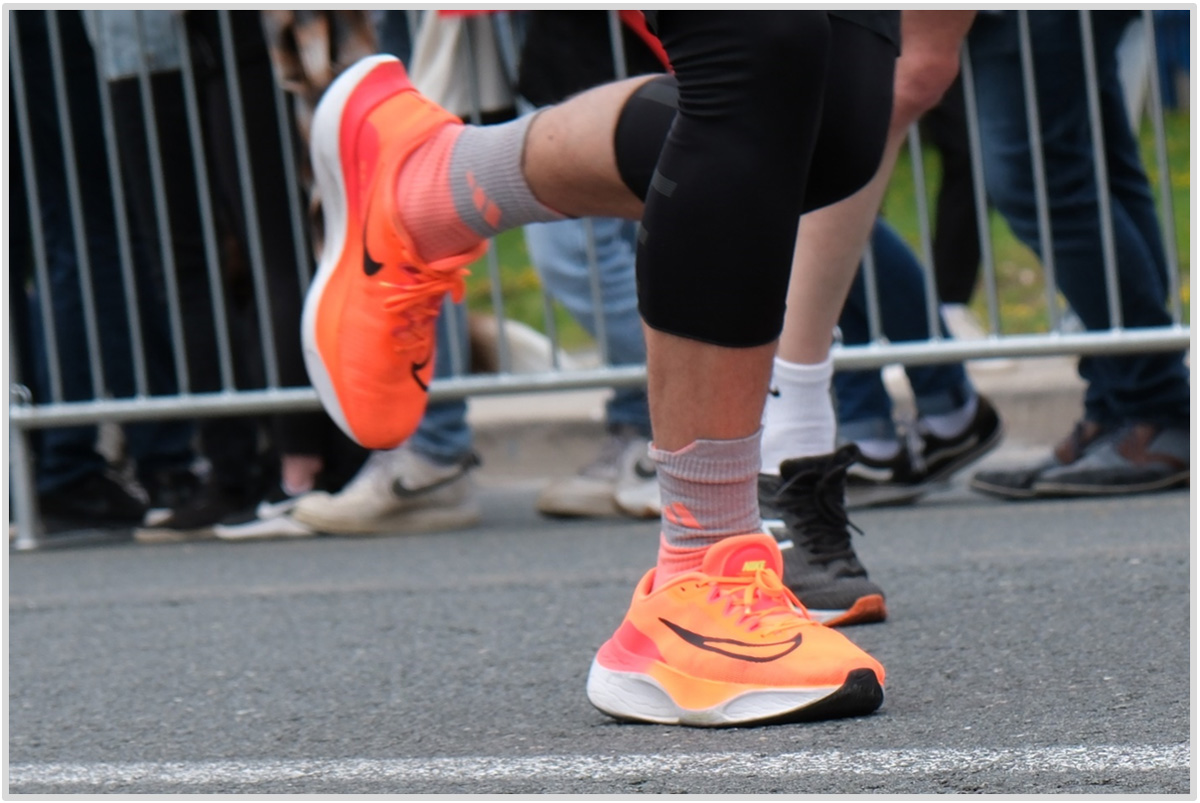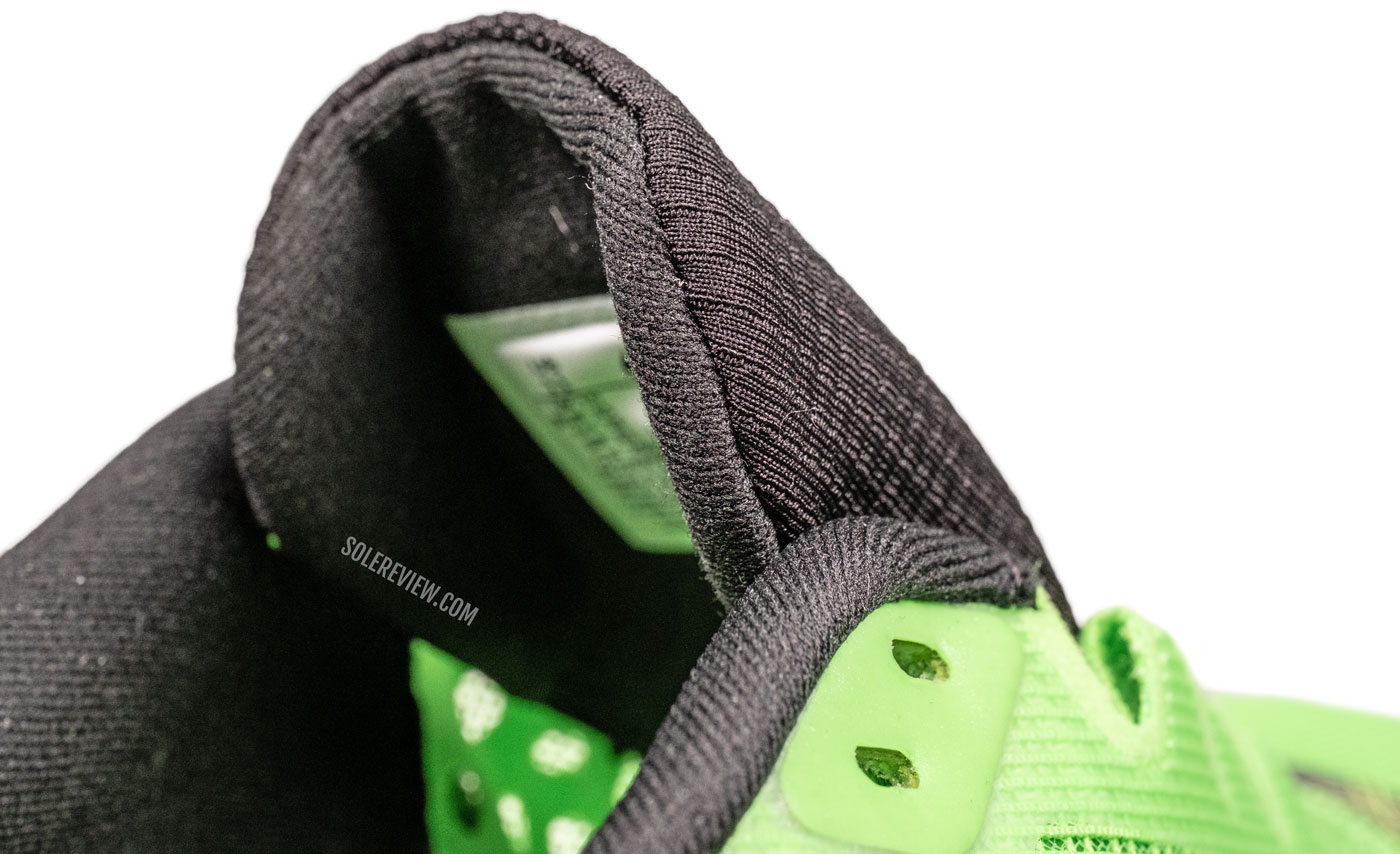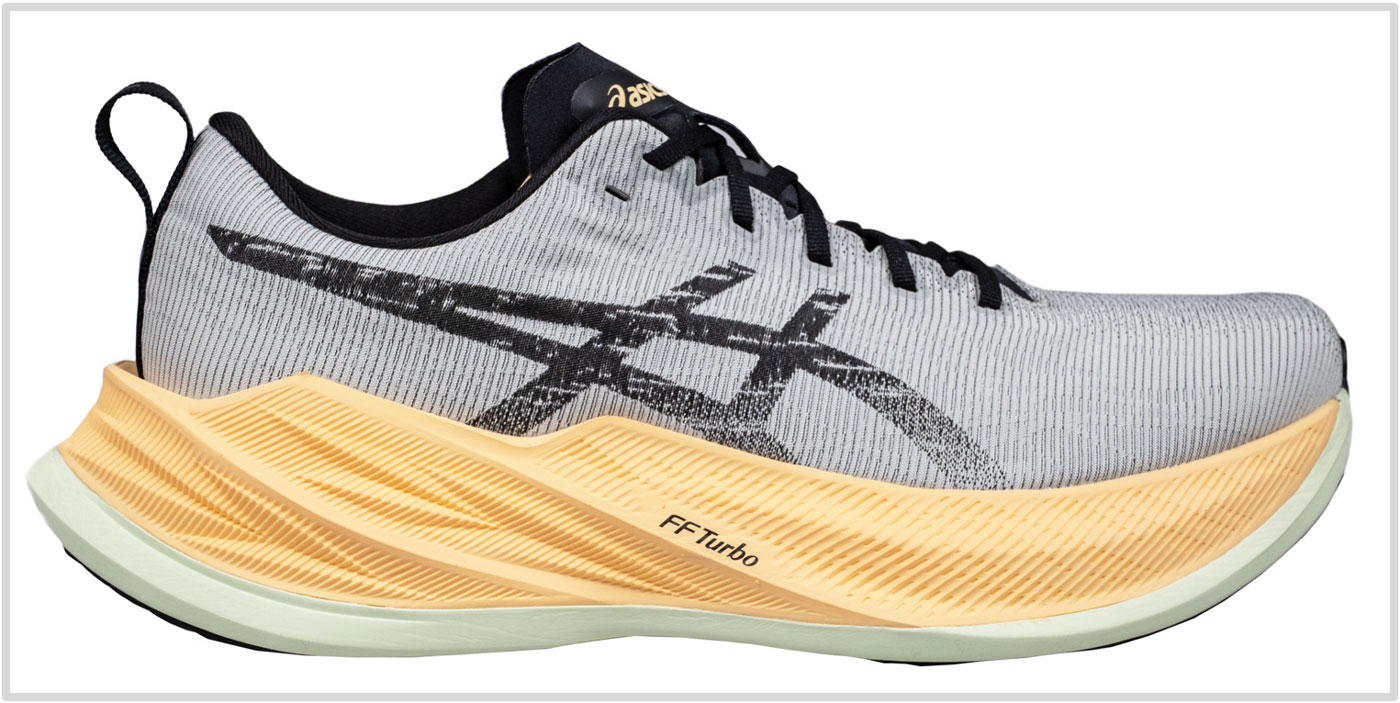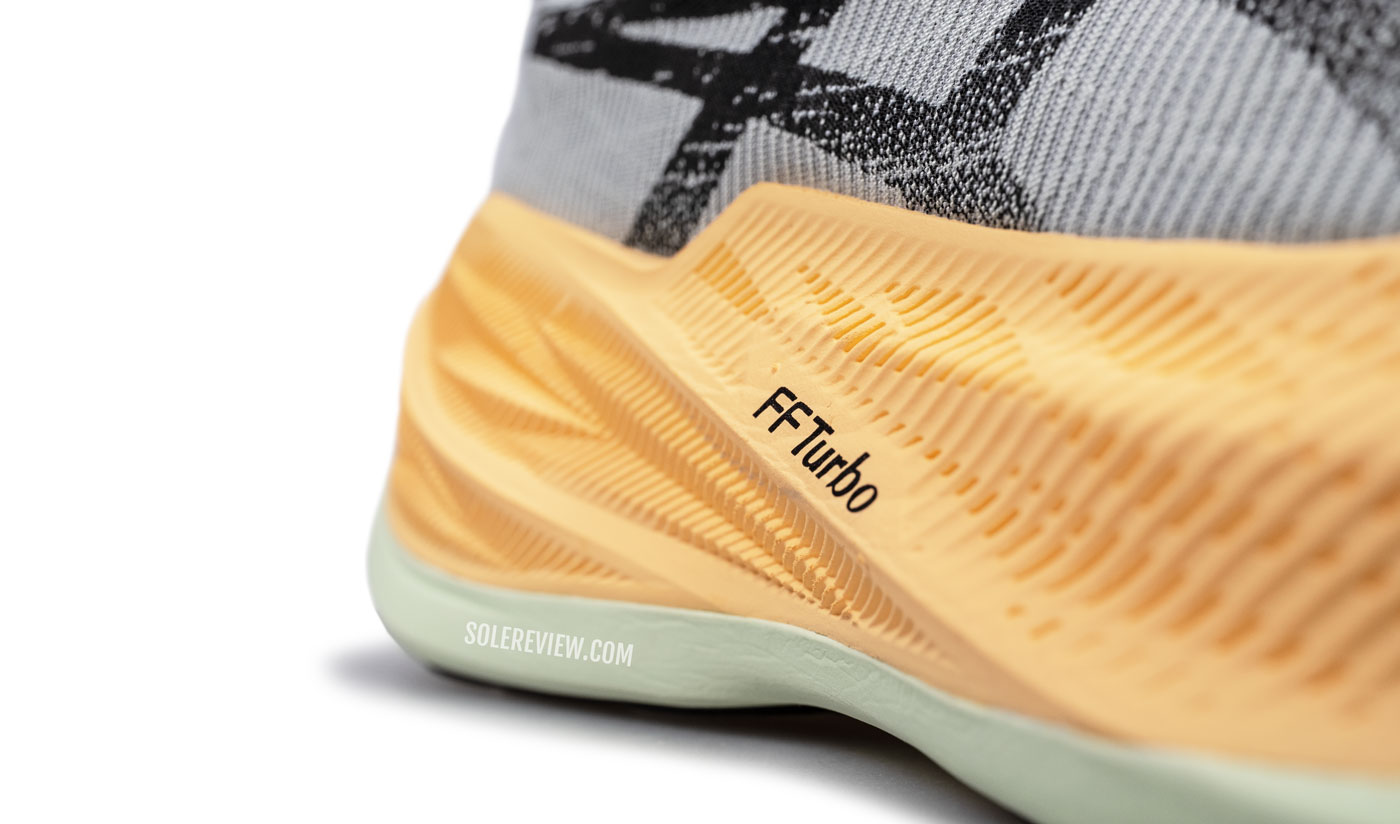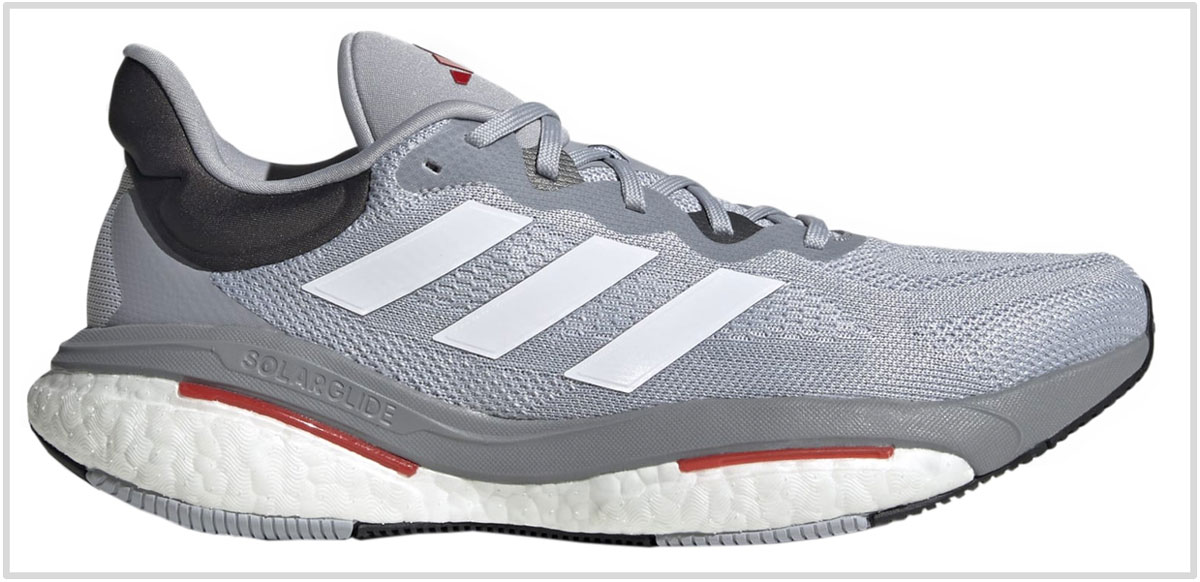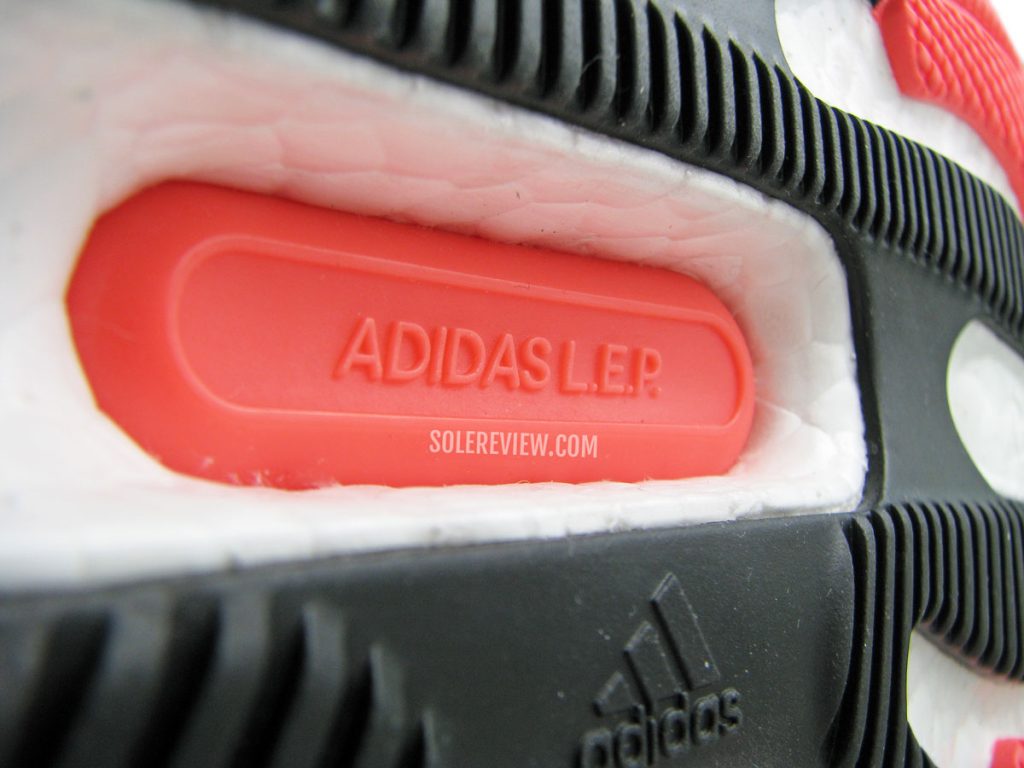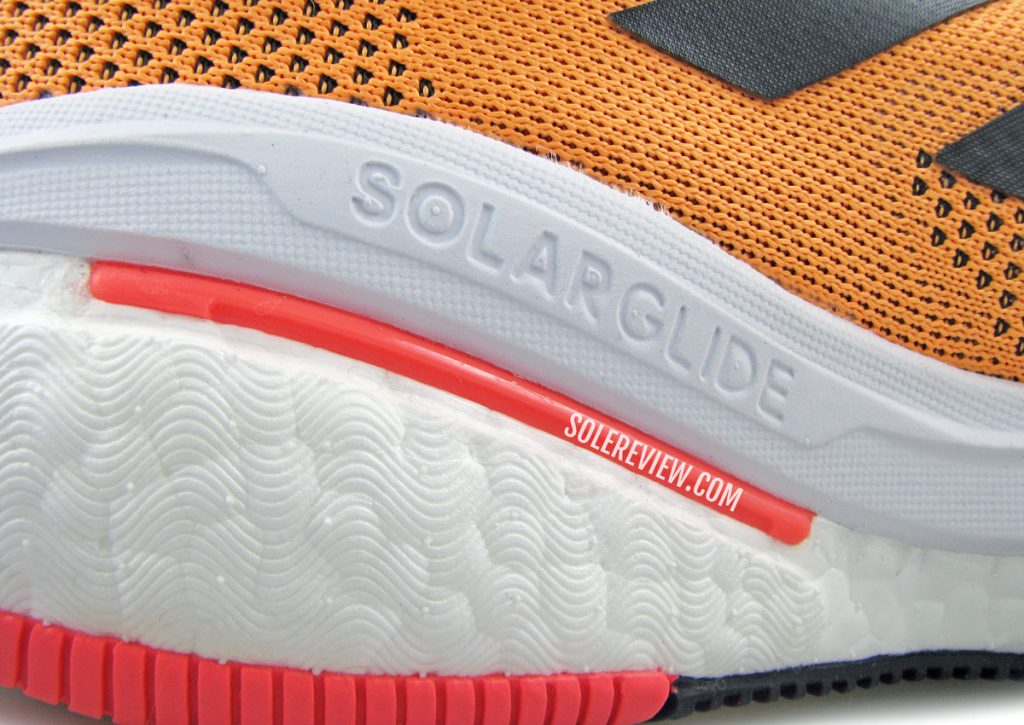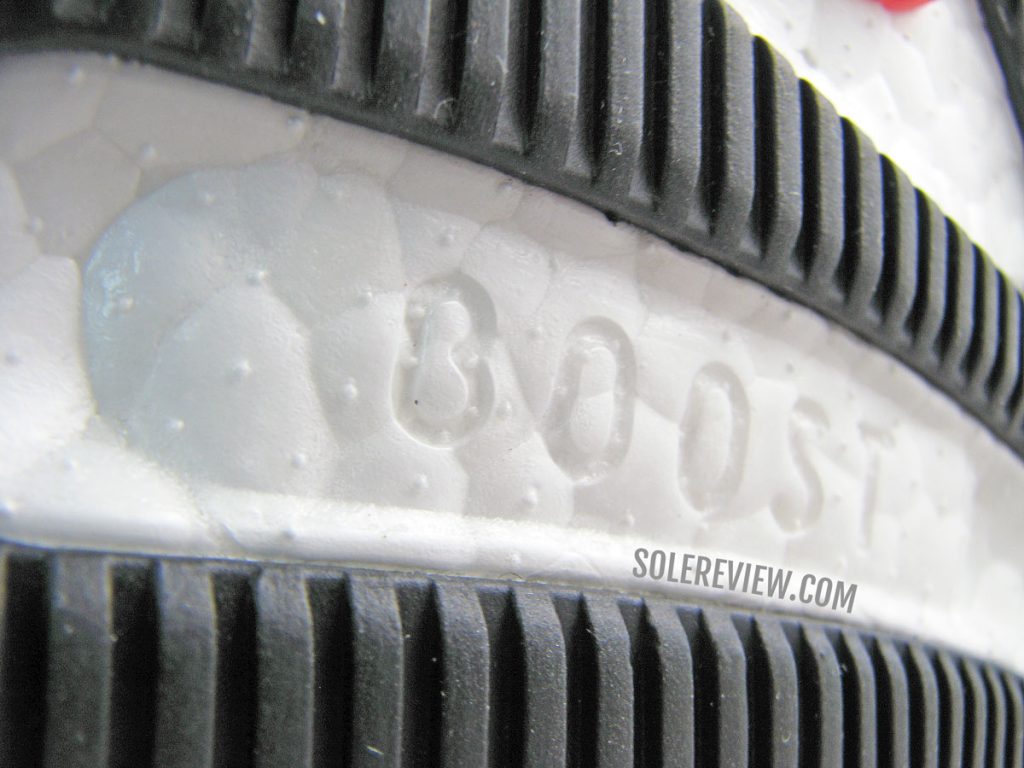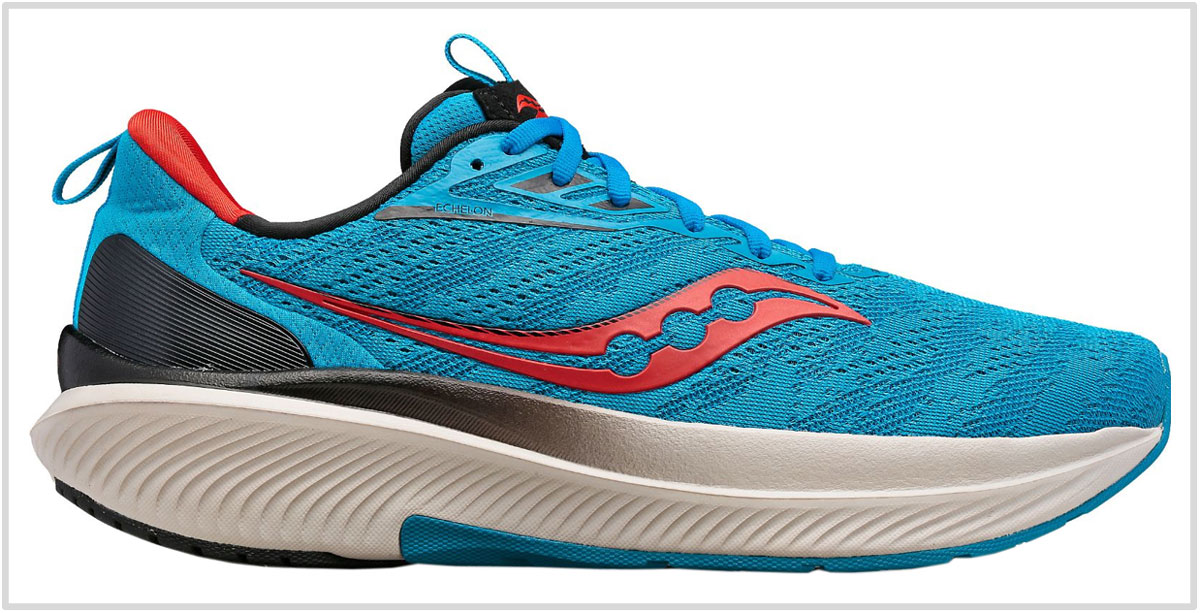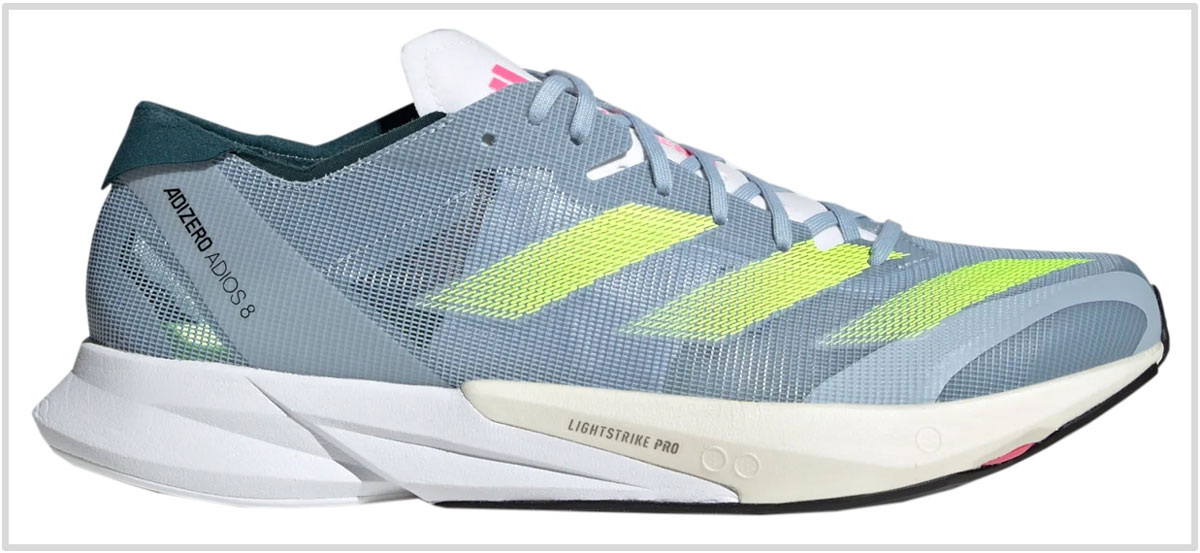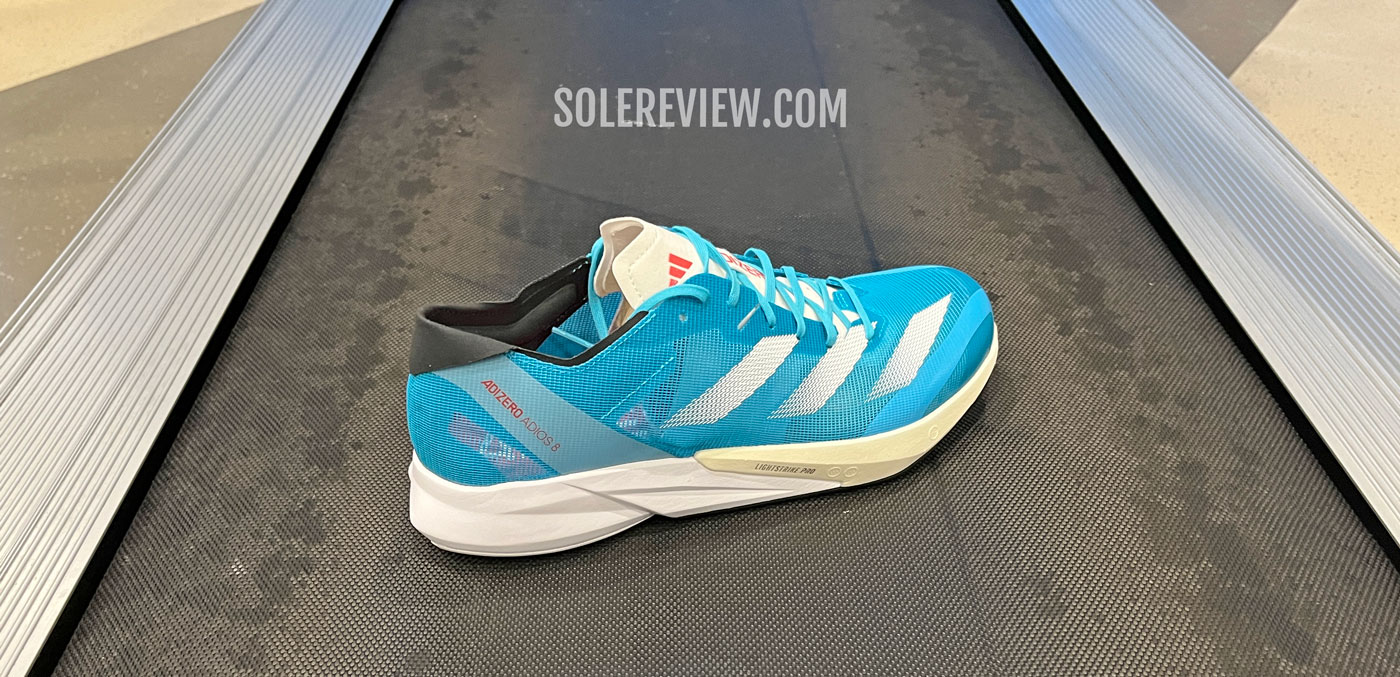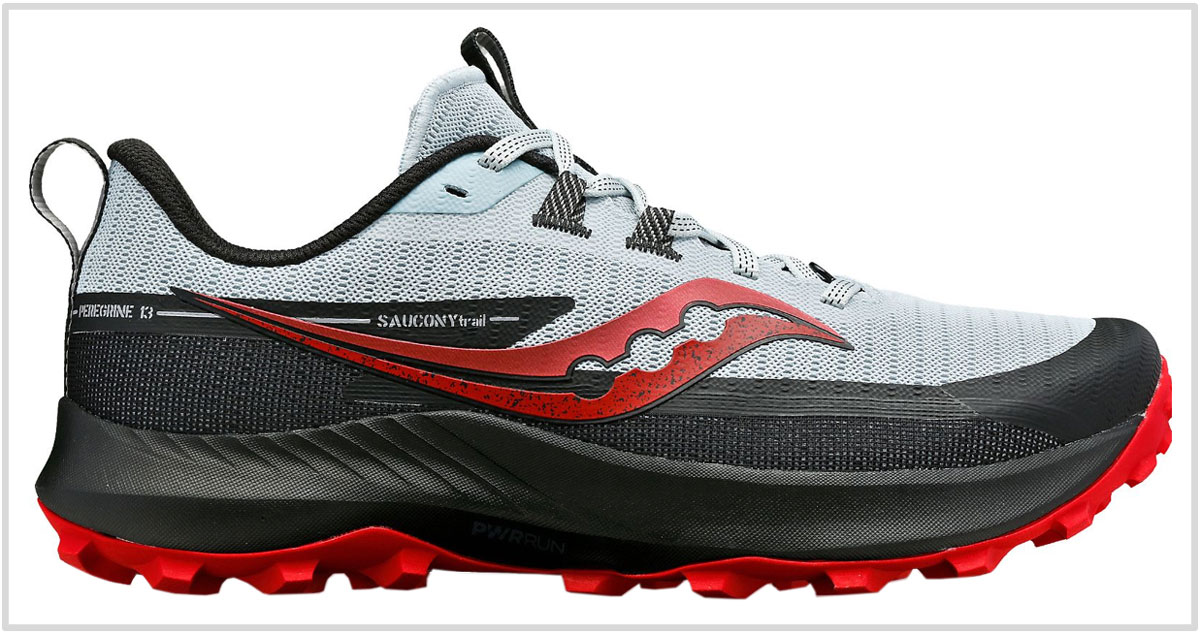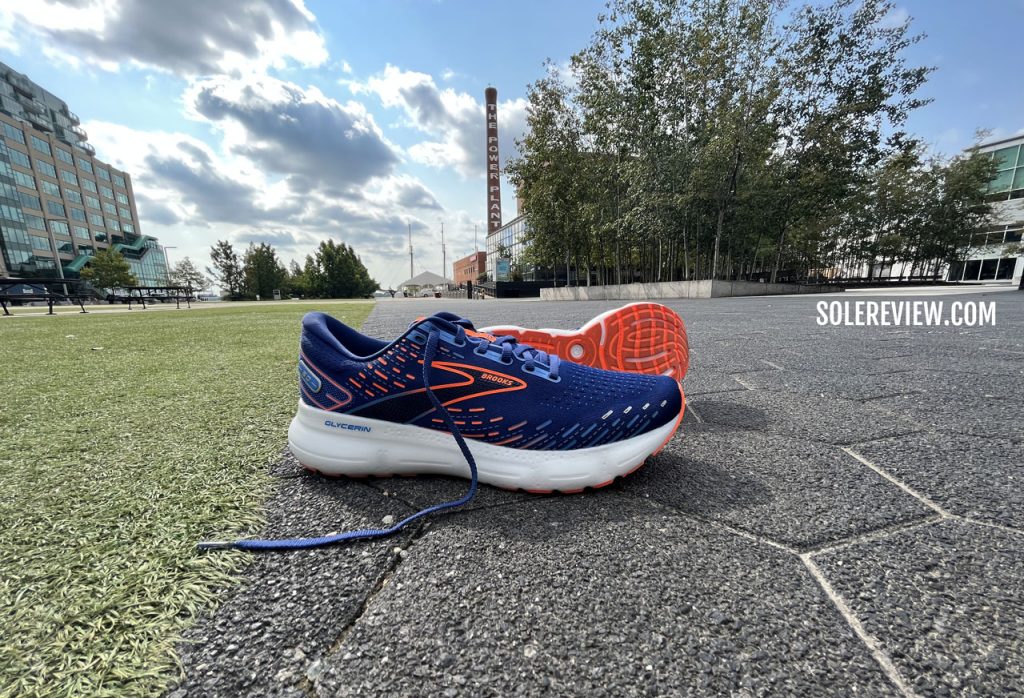
This article has been updated with current models for November 2023. The adidas adios 7 has been replaced with its updated version. The Asics Superblast is a new addition. The Adidas Ultraboost Light has been removed.
In this product guide:
- 1. Factors to consider
- 2. Supportive comfort for heavy runners: Brooks Glycerin 20
- 3. Supportive neutral trainer for daily runs: Saucony Ride 16
- 4. Soft cushioning for long-distance runs: Asics Nimbus 25
- 5. Max cushioning for heavy runners: Nike Invincible 3
- 6. Marathon racer for heavy runners: Nike Zoom Fly 5
- 7. Versatile long-run shoe for heavy runners: Asics Superblast
- 8. Supportive cushioning for easy runs: adidas Solarglide 6
- 9. Orthotic-friendly trainer for heavy runners: Saucony Echelon 9
- 10. 5K racer for heavy runners: adidas adios 8
- 11. Firm trail running shoe for heavy runners: Saucony Peregrine 13
You’re probably reading this guide because you weigh more than 200 lbs/90 kilos. However, the word ‘heavy’ can mean so many things. For example, we could be talking about a large-framed runner with feet to match. Also, low or flat arches may not necessarily be a part of the discussion – many heavy runners have a regular arch.
When searching for suitable running shoes, you’ll likely hear the following shopping advice:
“Buy a running shoe with the softest cushioning. They’re the best for heavy runners.” Or, “You can’t go wrong with a stability shoe for overpronators.”
Wrong. That’s not great advice at all.
We understand why most people recommend max-soft or motion-control shoes. The underlying (and misinformed) logic is that a softer ride equals better shock absorption. However, that simply isn’t true; there is no scientific evidence behind this theory.
A running shoe that’s excessively soft can do more harm than good when it concerns a high bodyweight. Here’s why:
An uber-soft running shoe is unstable for high bodyweight.
A shoe that feels supportive for a 150 lb runner might end up throwing a heavier individual around. If the midsole isn’t supportive, then that translates into a higher workload for the body.
During each phase of the gait cycle, the body has to work harder to compensate for the unstable shoe. This increases the chances of injuries.
Excessive midsole softness can cause the shoe to bottom out.
The Asics Nimbus 17 was a perfect example of this in action. Its midsole was so mushy that it bottomed out even if you were a 150-pounder, and parts of the outsole were felt during runs.
An extremely soft shoe will lead to significant variance between the static and dynamic heel drop.
An often overlooked aspect is that there can be a huge difference between the published heel drop and the dynamic offset of ultra-soft running shoes.
The heel-to-toe offset is the difference between the heel and forefoot midsole thickness, and brands often advertise this number. For many shoe geeks, this number is an influencing factor when buying running shoes.
However, the static heel drop should be taken with a huge grain of salt. When fully loaded, the real heel offset of a shoe can vary a lot from the static drop. A shoe with a firm midsole keeps this variance low.
Running in a very soft shoe will result in a lower heel gradient than expected; more so when the foot-strike load is in multiples of 200 lbs.
Depending on how soft a midsole is, a ’10 mm’ drop could turn into a 4 mm offset during runs. This could strain the Achilles or Calf muscle if you’re not used to running in footwear with a low heel drop.
Super-soft cushioning has lower durability.
Except for newer materials like adidas Boost, Saucony Pwrrun PB, or Nike ZoomX, EVA foam-based midsoles tend to lose their cushioning after a few hundred miles. A heavy runner using a shoe made of a soft EVA foam compound is likely to fatigue it sooner than a lighter runner.
So far, we’ve painted super-soft running shoes in a poor light, but there are exceptions. Certain shoes made from new-gen foams can be very soft, yet durable with acceptable levels of stability.
That is why the Nike Invincible 3 is featured on this list. It’s a very soft shoe, but its ultra-wide PEBA foam midsole will last longer than comparable EVA foam parts. Having said that, the Invincible works best only for easy cruising.
In short, firm and stable running shoes are a better fit for heavy runners.
Traditional ‘stability’ shoes can end up achieving the opposite effect
Conventional stability shoes have a firm inner midsole and a softer outer sidewall. While this design reduces the inwards rolling of the foot, it comes at the cost of midsole bias. The body weight will follow the path of least resistance and lean laterally.
Not all ‘stability’ shoes are necessarily stable.
If very soft shoes and laterally leaning stability models are off the menu, then what’s left to buy?
Softness and cushioning are often used interchangeably. But cushioning – which is loosely defined as the ability to protect the foot from impact forces – also exists in firmer shoes. So it is important to buy a shoe that is cushioned yet supportive; the kind that can safely manage a 200+ lb body weight over hundreds of miles.
Many cushioned and supportive running shoes exist, but it is a challenge to sift through the confusing assortment of products.
To help narrow the search, we’ve curated over a dozen running shoes. This buyer’s guide is far from exhaustive but a good place to start. Included here are regular trainers, heavy stability shoes, trail running shoes, and racing flats.
1) Supportive comfort for heavy runners: Brooks Glycerin 20
Brooks often exaggerates the cushioning softness of its shoes, so pay no heed when Brooks claims that the Glycerin 20 is ‘super soft.’
Despite the brand new ‘DNA Loft V3’ (which is similar to the DNA Flash) midsole, the Glycerin 20’s cushioning strikes an excellent balance between ride comfort and stability.
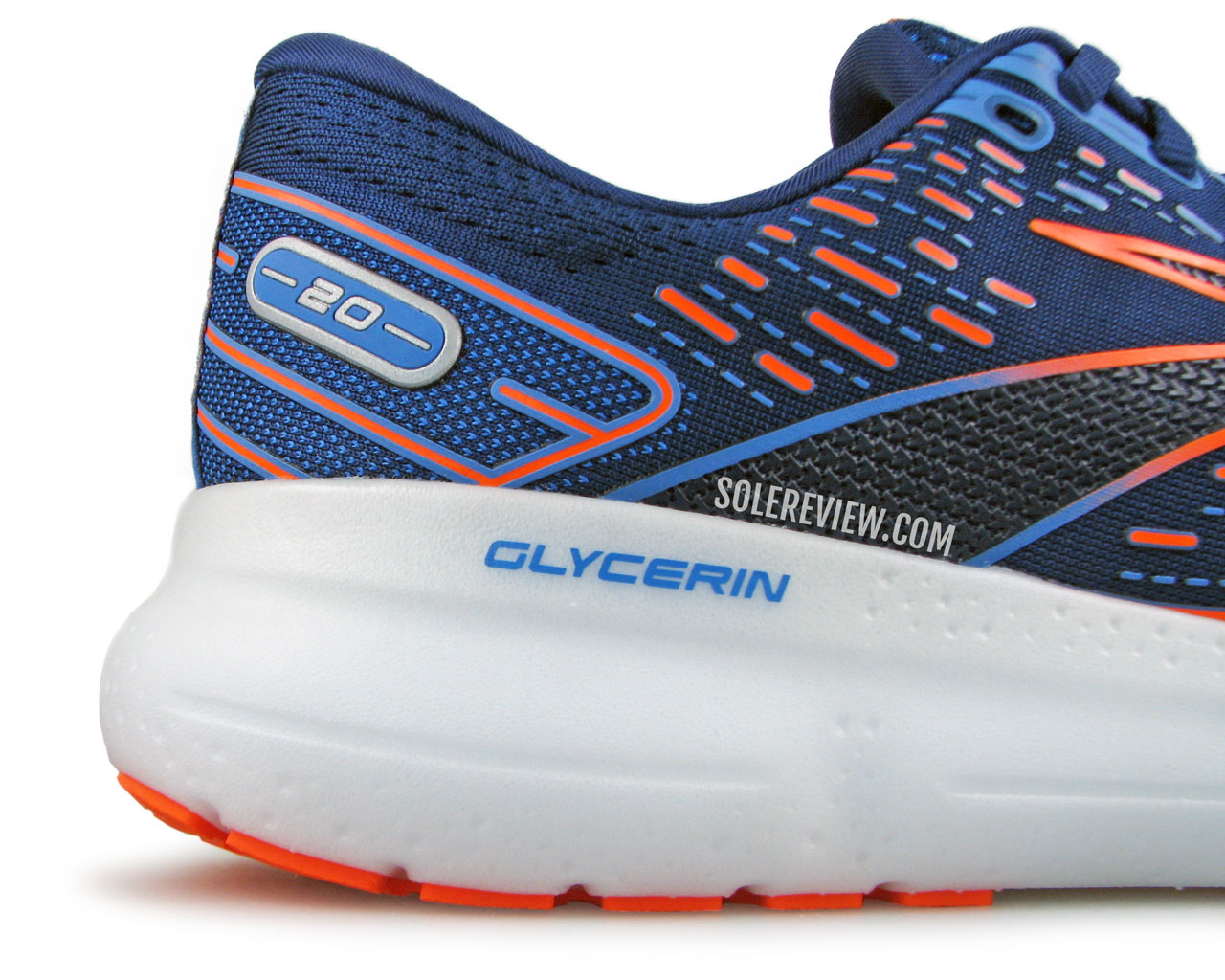
The Brooks Glycerin 20 is nowhere close to super-soft, and that’s good news for the ride stability.
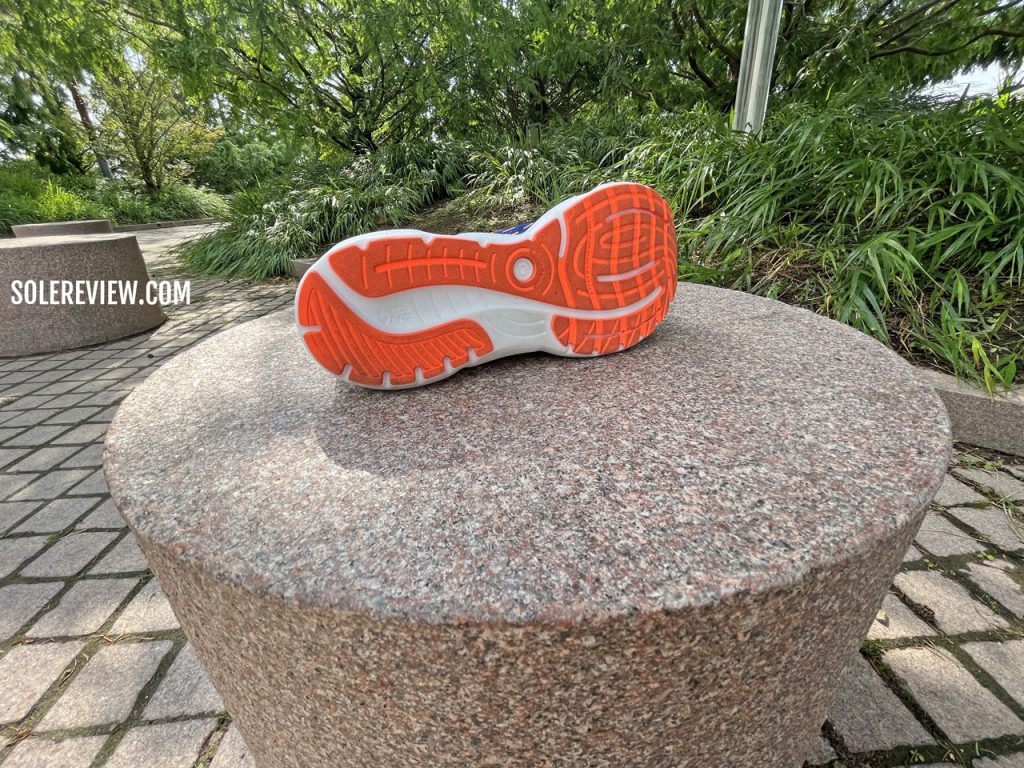
Despite its thick midsole, the firm and resilient foam cushioning makes the shoe ideal for heavy runners.
Rather than the advertised ‘super soft’ cushioning, the new midsole has a medium-soft ride that’s topped with a cushy removable insole. Our detailed review breaks down the Glycerin 20’s ride character.
In the context of this guide, that’s an ideal trait. The full-length DNA Loft V3 midsole isn’t mushy, so that translates into a supportive ride. The Glycerin 20 also has a wide heel and forefoot footprint, thus creating a planted ride experience for heavy runners.
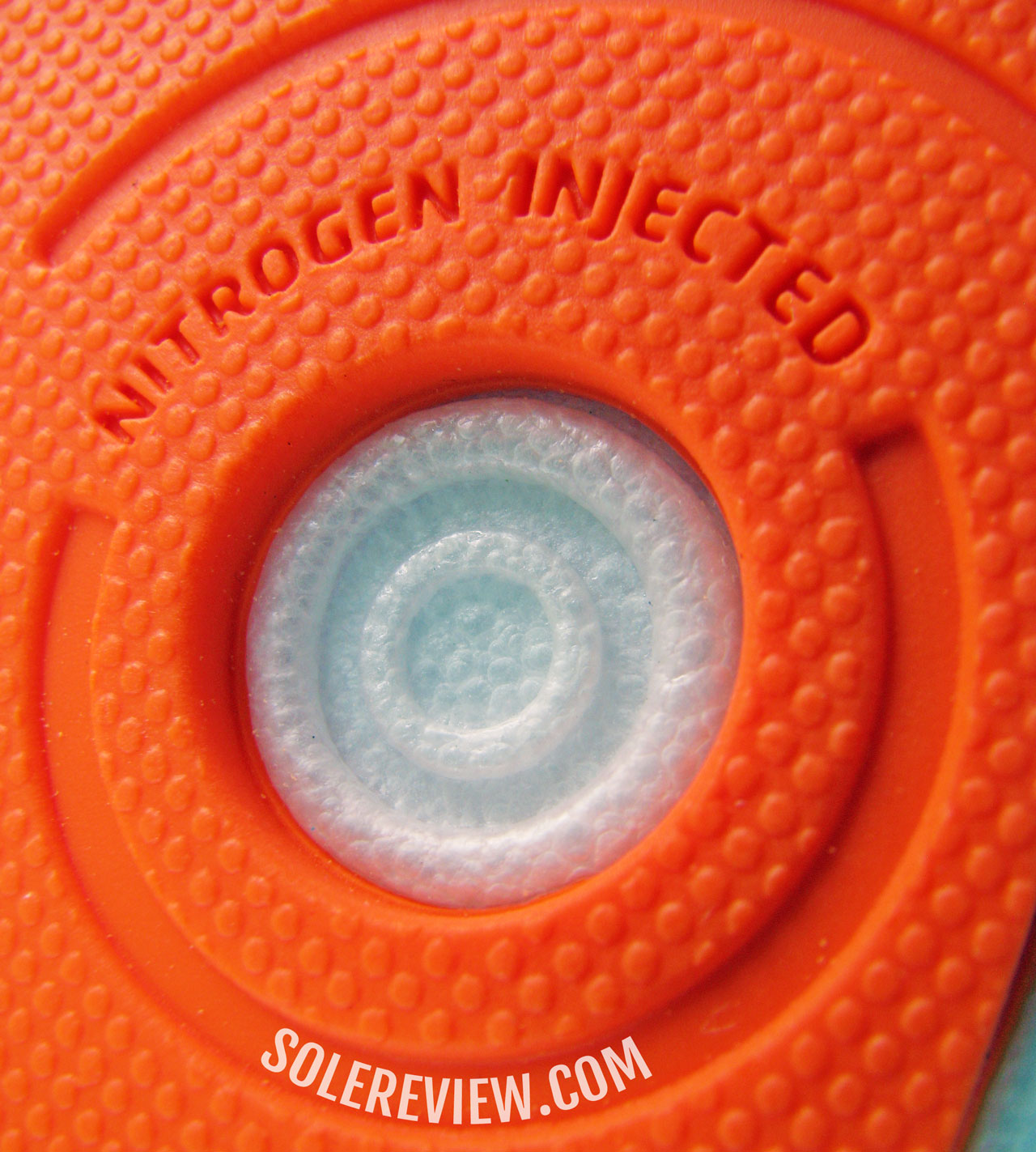
The DNA Loft V3 appears to be an EVA blend foam that is blown with Nitrogen. That’s what the tiny bubbles are.
The single-density midsole has a smooth ride, and the grippy outsole rubber provides plenty of traction.
Despite the absence of an inner sleeve, we prefer the standard Glycerin 20’s upper fit over the Glycerin 20 GTS or Stealthfit variant.
Also see: The Nike Zoom Structure 24 – though its midsole lacks a medial post, the ride is sufficiently stable for heavy runners.
2) Daily trainer for heavy runners: Saucony Ride 16
Saucony loyalists are very familiar with this model’s firm and supportive ride. The kind of ride that is transition-friendly and protective enough for most runs, long or short.
The Saucony Ride 16 uses the same midsole as the 15, so it continues to be a firm running shoe with plenty of support for heavier runners. There’s no change in the ride quality over the last version, so our Ride 15 review contains plenty of relevant information.
Like the last time, the Ride 16 has a deep transition groove that helps center the bodyweight during the gait cycle.
The Pwrrun foam (an EVA blend) midsole on the Ride 16 contributes to the shoe’s do-it-all versatility and supportive nature.
The firm foundation is stable enough for weighty runners while providing the cushioning that most runs require.
The removable insole made of Pwrrun+ (expanded PU foam) provides step-in comfort. It’s also thick enough to be replaced with a custom orthotic.
The fully-sleeved upper is breathable and accommodating for wider feet. There’s an optional 2E size as well.
3) Soft comfort for heavy runners: Asics Nimbus 25
The Asics Nimbus 25 makes it to this guide, but last year’s Nimbus 24 did not. Even though both the Nimbus 24 and 25 share the same name, the new shoe is a very different product.
Asics has overhauled the Nimbus for its silver jubilee, and the result is a running shoe with significant ride upgrades. The outer midsole is 100% Flytefoam Blast+ with no signs of a visible Gel window. Our in-depth review has more.
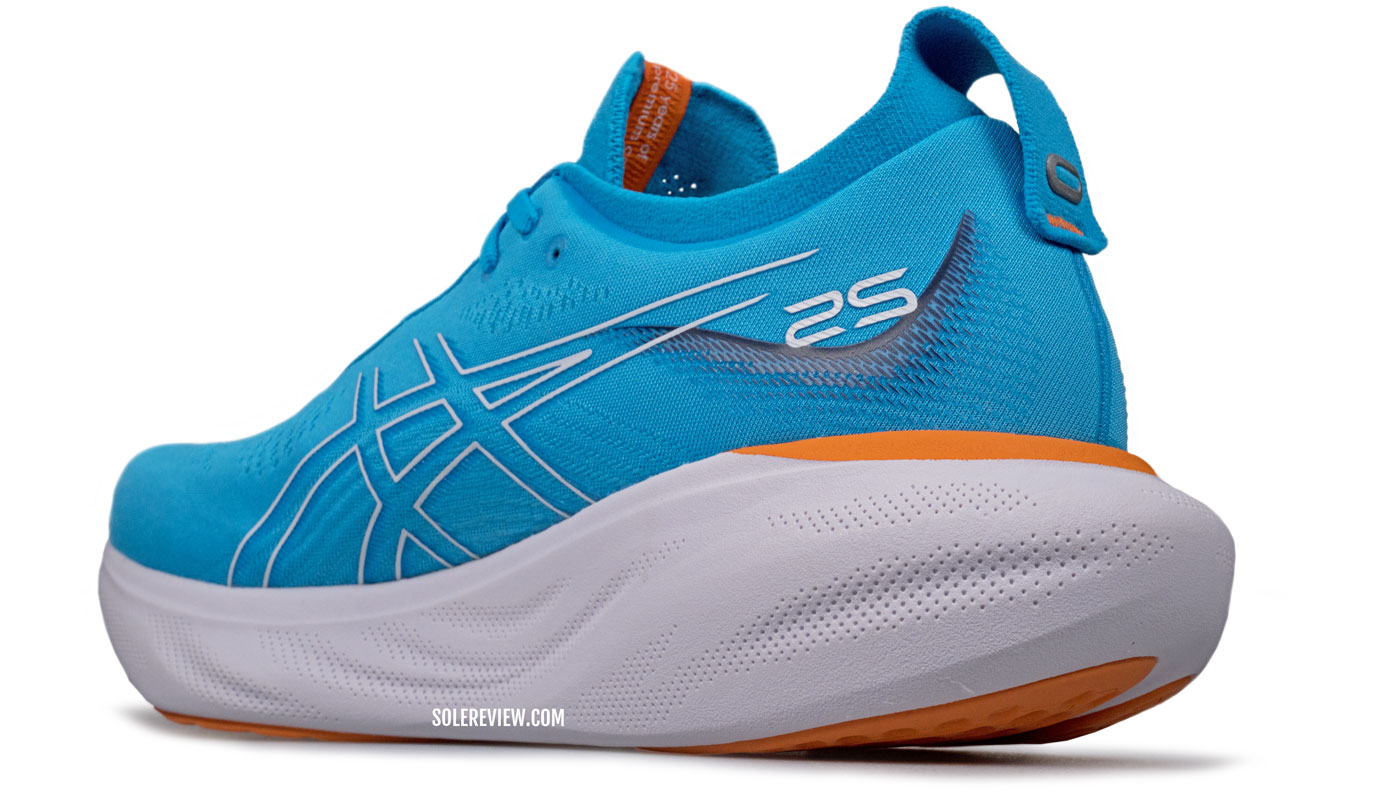
No Gel this time. The wide Flytefoam midsole does a better job of marrying long-distance comfort with stability for heavy runners.
The full-length Flytefoam stack has a wide base that creates a cushioned and stable foundation.
The lack of a bias makes the Nimbus 25 very neutral; a characteristic that works for runners across different weight classes. The soft midsole is also ideal for long-distance comfort, and yet doesn’t feel lazy. The forefoot now has a slight rocker that imparts an agile character to the Nimbus 25.
The engineered mesh upper blends interior smoothness with a plush and secure grip. The interiors run extremely hot, so this is not a shoe for summer marathons.
4) Max-cushioning for heavy runners: Nike Invincible 3
The Nike Invincible 3 is an exception to our ‘no soft shoe’ criteria, and here’s why.
The midsole is ultra-wide across the heel and forefoot. Nike also uses additional stability-assisting components like the plastic heel clip. Our review has a more detailed explanation of how the different components work together for a supportive ride.
These design features allow the midsole to load a higher bodyweight without unsettling the runner. Also, the Invincible 3 has two things that the Invincible 1 and 2 did not.
The earlier models did not have a lasting at all – this meant that only the insole separated the foot from the ZoomX core. That design allowed the foot to ‘sink’ into the soft midsole with greater ease.
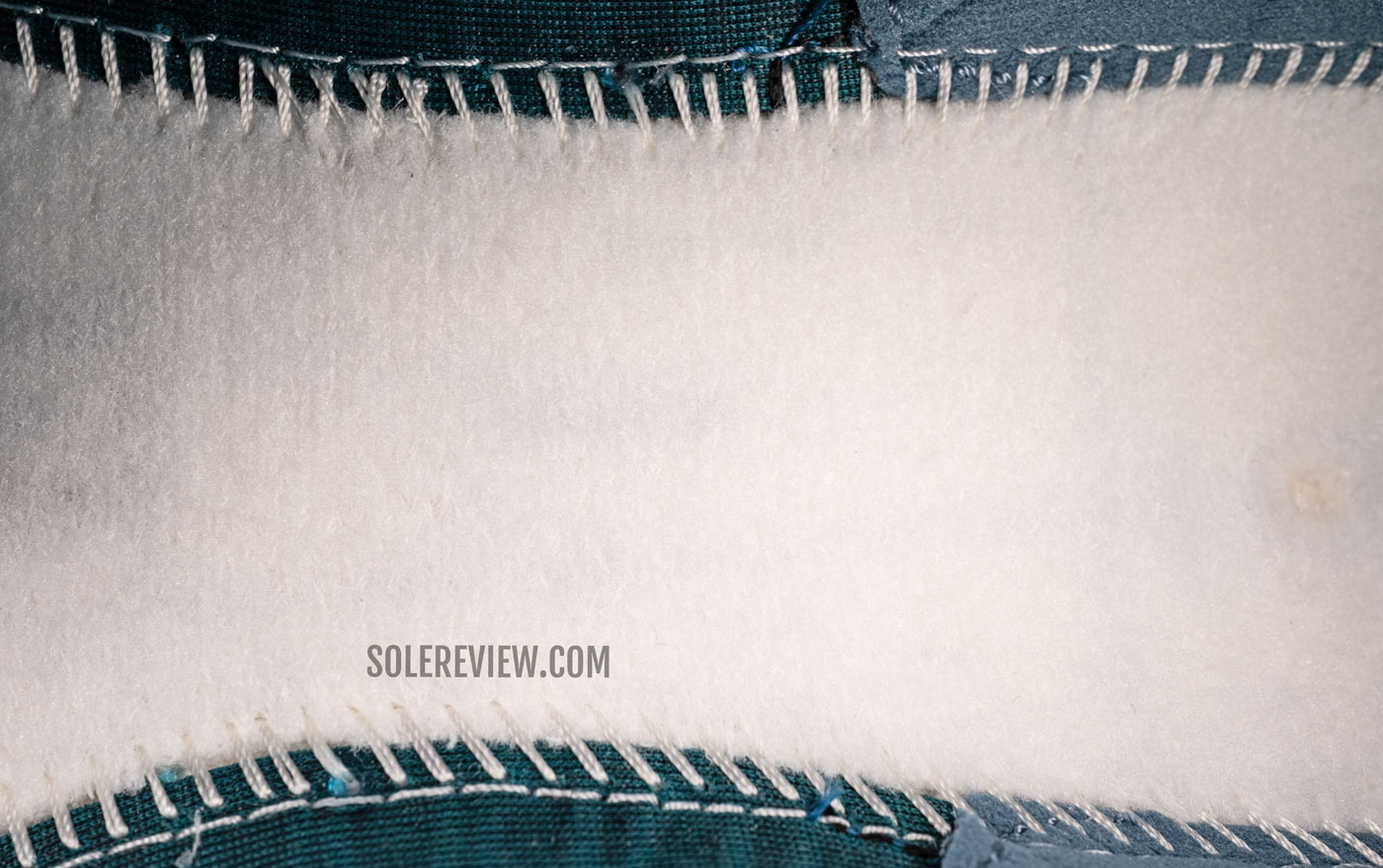
The Invincible 3 gets a fabric lasting covering the midsole – something that the V2 did not have. As a result, the cushioning is slightly firmer.
That has changed for 2023. The Invincible 3 gets a fabric lasting like every other running shoe, and that diminishes the plush feel. The midsole is also scooped on the sides, and that too, firms up the cushioning.
What we wrote in the comprehensive review of the Invincible 2 also applies to the V3 – the soft ride is only good for leisurely cruising. Faster runs are going to be a struggle due to the midsole softness.
There’s plenty of room inside the plush upper, so the Invincible 3 will accommodate most foot shapes.
5) Marathon racer for heavy runners: Nike Zoom Fly 5
Most plated marathon racers have one problem. They’re not very stable. While models like the Saucony Endorphin Pro 3 and New Balance SC Elite V3 have improved stability, the rearfoot stability doesn’t inspire confidence – not just yet.
This is where the Nike Zoom Fly 5 adds value. Sure, it carries a lot more heft than lighter marathon racers, but in lieu, it provides a higher level of stability. The Zoom Fly 5 is very different from the Zoom Fly 4 and well worth the upgrade. Our in-depth review is a good place to find out more about this shoe.
Unlike other marathon racers that rely on a single-density midsole made of a super-foam like PEBAX, the Zoom Fly 5 has a firmer casing with a softer ZoomX foam core and a Carbon plate.
The midsole is also wide, and the outsole rubber covers a lot more ground. These qualities make the Zoom Fly 5 an excellent plated racer for heavy runners.
As a marathon shoe, the Zoom Fly 5 combines the familiar snap of the plate with long-distance comfort. Though it feels quick enough for sustaining 4:00 min/km (6:30 min/mile), it won’t give you the quick touch-and-go feel of much lighter marathon racers like the Nike Vaporfly 3.
The padded upper also feels closer to a traditional trainer than a typical Carbon-plated racer.
6) Versatile long-run shoe for heavy runners: Asics Superblast
Is there any other running shoe that’s as versatile as the Asics Superblast? It’s comfortable yet quick enough for a marathon. Its above-average durability and versatility makes it an excellent daily trainer. The true-to-size upper fits securely.
And thanks to the thick stack of Flytefoam Turbo foam, the Superblast offers a high cushioning-to-weight ratio. Here’s our review for more on this versatile trainer.
And if all that wasn’t enough, the Asics Superblast works very well even heavily loaded.
Unlike most cushioned midsole that bottoms out or collapses under heavy loads, the Superblast’s midsole maintains its structure. As seen in the image above, the Flytefoam core doesn’t deform when loaded. This results in better stability and consistent cushioning over comparable shoes.
7) Supportive cushioning for heavy runners: adidas SolarGlide 6
Last year, the redesign of the Solarglide 5 (our review is here) created an extremely stable running shoe; the Boost midsole was wider and stiffer than before.
The Solarglide 6 is based on the same midsole as the Solarglide 5, so the midsole performance stays the same.
Even though the SG6 has a high-volume Boost midsole, the forefoot and heel have a wide flare. The adidas LEP shank (previously called Torsion) sits close to the foot and supports the midsole.
This unique design makes the Solarglide 6 a firmly cushioned and supportive running shoe. The EVA rim above the Boost foam core also acts as a stabilizing feature.
All these features make the Solarglide 6 an excellent running shoe for heavy runners.
Its 13-ounce weight is on the heavier side, so its versatility is somewhat limited; it’s best used as a high-mileage cruiser or for everyday runs at easy speeds.
8) Orthotic-friendly trainer for heavy runners: Saucony Echelon 9
There are many reasons why the Echelon 9 features in this article.
Saucony uses the cushioned yet supportive Pwrrun midsole foam here, thus infusing the Echelon 9 with high levels of inherent stability. If that wasn’t enough, the outsole has an ultra-broad footprint for greater contact surface.
The midsole material and geometry create a ride that is cushioned but also solid-footed. The Echelon 9 loses a lot of weight compared to the Echelon 8. Whereas the Echelon 8 weighed more than 12 ounces; the Echelon 9 is a 10.3-ounce (292-gram) shoe.
For heavy runners who rely on a customized insole, the Echelon 9 has a thick PU insole that can be swapped with an aftermarket orthotic. There’s more upper space available in the optional wide and extra-wide sizes.
The soft upper is very plush; the heel collar and tongue are generously padded and use soft lining materials. An inner gusset makes the fit smooth while also keeping the tongue in place.
9) 5K racer for heavy runners: adidas adios 8
As a road racer for shorter (5K – 10K) runs, the adidas adios 8 is a great fit for most runners, heavy or not.
It’s lightweight, very stable, and yet cushioned enough for distances of up to 10k.
The Continental rubber outsole provides plenty of traction during speed runs, whereas the snug upper keeps the foot planted.
The adidas adios 8’s midsole combines the softer Lightstrike Pro foam under the forefoot with a firmer EVA frame under the heel.
This dual-density stack distributes stability and comfort where they’re needed the most. It’s stable under the rearfoot for heavy runners, and the low-profile forefoot delivers cushioning without compromising stability and ground feel.
The adios 8 (and Boston 12) have been redesigned from the ground up for 2023. The adios 8 gets a more balanced distribution of the EVA Lightstrike and Lightstrike Pro when compared to the adios 7, as well as a new outsole with (more) robust EnergyTorsion rods. Read our in-depth review for all the updates.
10) Trail running shoe for heavy runners: Saucony Peregrine 13
The Saucony Peregrine 13 is an underrated trail running shoe.
The upper fit is protective, secure, and possesses helpful features like gaiter attachment points. It also comes in a wide, and the interiors are very comfortable for warm-weather trail runs. Despite the redesigned midsole and upper, the Peregrine 13’s on-trail manners are very similar to the Peregrine 12.
The stable ride makes the Peregrine 13 an excellent choice for large-framed runners. Even though the new Peregrine gets a brand-new midsole, the firm cushioning retains its supportive character.
The firm midsole has inherent stability over uneven surfaces, and the rock plate adds forefoot protection and stiffness. The 4 mm heel-to-toe offset makes the transitions smoother.
We love what Saucony has done with the insole. Rather than having a Pwrrun+ topsole under an EVA footbed (that the Peregrine 11 and Xodus have), the Peregrine 13 has a removable insole made of resilient Polyurethane foam.
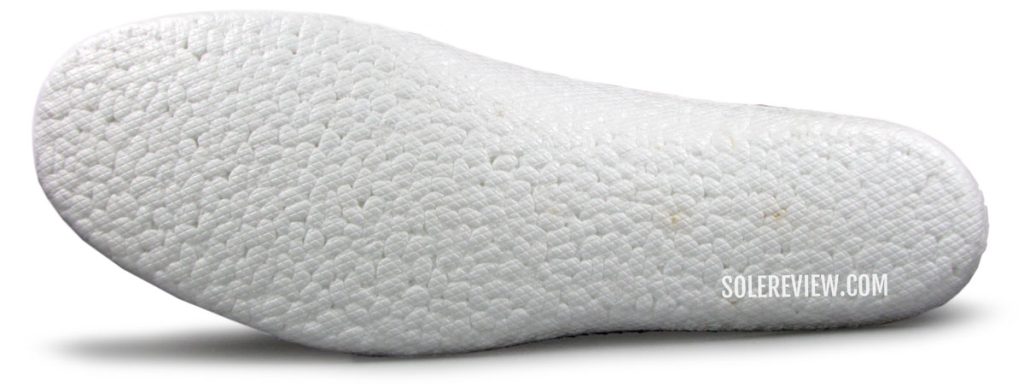
Everun, Pwrrun+ – call it whatever you will. The unique insole is no longer EVA foam, but steam-expanded Polyurethane.
This adds a cushy and responsive layer without negatively affecting the stability.
The outsole combines an aggressive lug geometry with the sticky ‘Pwrtrac’ rubber to deliver a confidence-inspiring grip on the trails. Just like the previous model, the Peregrine 13 has a flexible rock shield for protection.
Also see: For a higher level of ride comfort, consider the Brooks Cascadia 17.
Do you own any of these shoes? Improve this review by sharing your insights – submit a review here.

